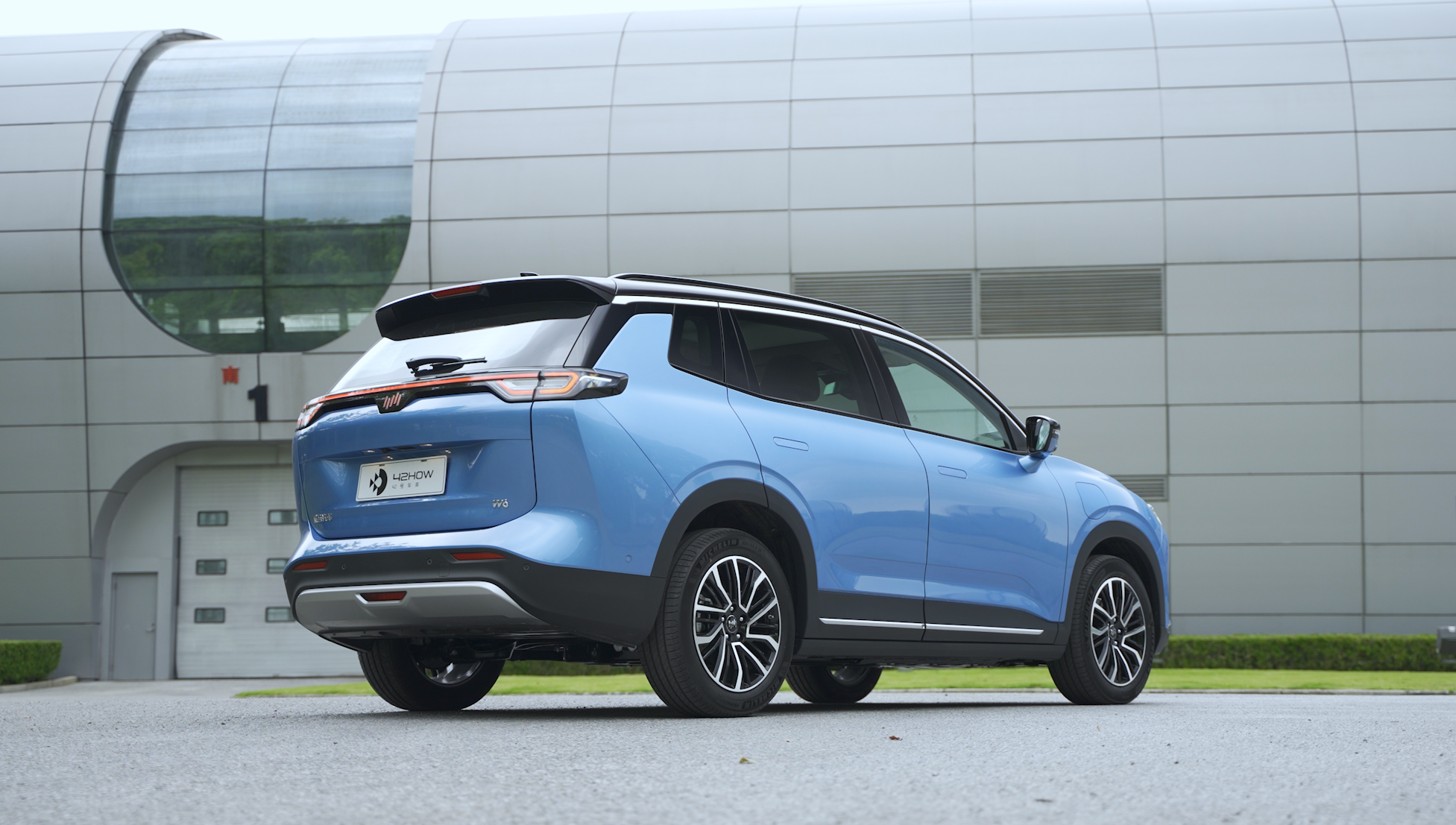Translation in English
Last month, our company got a new WEY W6 vehicle. As the timing coincided with the Shanghai Auto Show, I only glanced at it a few times at the parking lot, but did not carefully experience it.
To be honest, I didn’t have much interest in driving this 160 kW front-wheel-drive car for daily use. However, since I had watched several promotional videos of the W6 AVP parking on the Internet before, I was curious about its performance in this aspect.
So, when I got the key a few days ago, my first reaction was to find a parking lot.
First part of the test drive: at the parking lot
The noteworthy new key
Before getting into the car, the WEY W6 car key surprised me. The key’s design is similar to the BMW’s blade key, and the top and bottom surfaces include a blue-gray frosted texture which feels like the popular AG frosted glass on mobile phone cases. The smooth texture does not leave fingerprints.
The silver frame of the key includes three buttons: lock, unlock and tailgate switch. When pressed, the WEY logo on the key will light up, displaying a gradient effect from light pink, white to gray-blue.
Compared with the previous EX5’s black plastic capsule key, the new key of the W6 has greatly improved both in design and texture.
Approaching the vehicle, the lights and handles will automatically pop up to complete the standard one-stop keyless start-up process.
The interior is different, but not so “different”
Sitting inside the car, I quickly noticed that the interior layout of this car has been greatly modified compared to the previous WEY models.
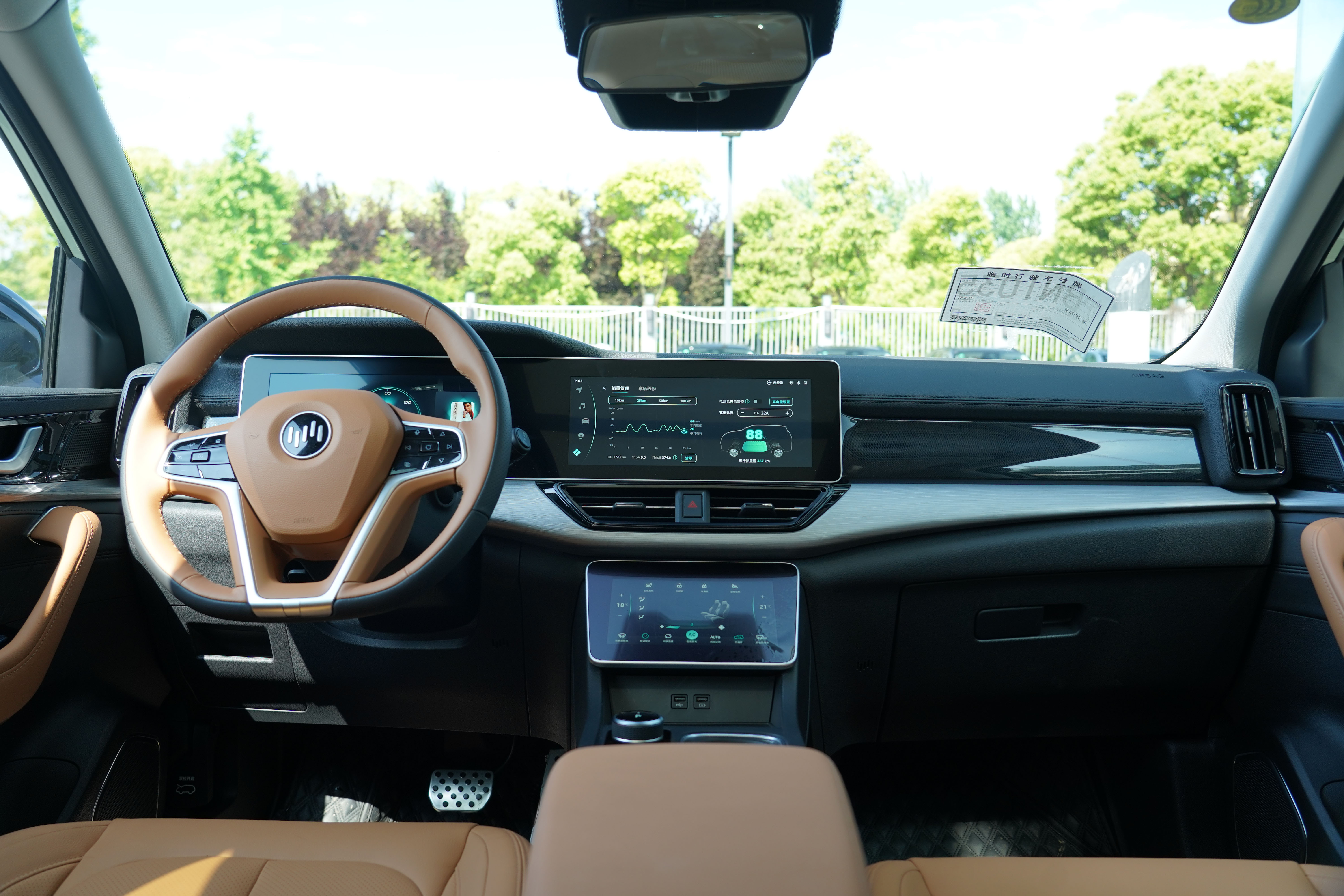
At first glance, the striking dual-color yellow-black steering wheel stands out, and the same color scheme is also reflected in the door handles and other parts. During the day, it doesn’t look as dull as a full black interior.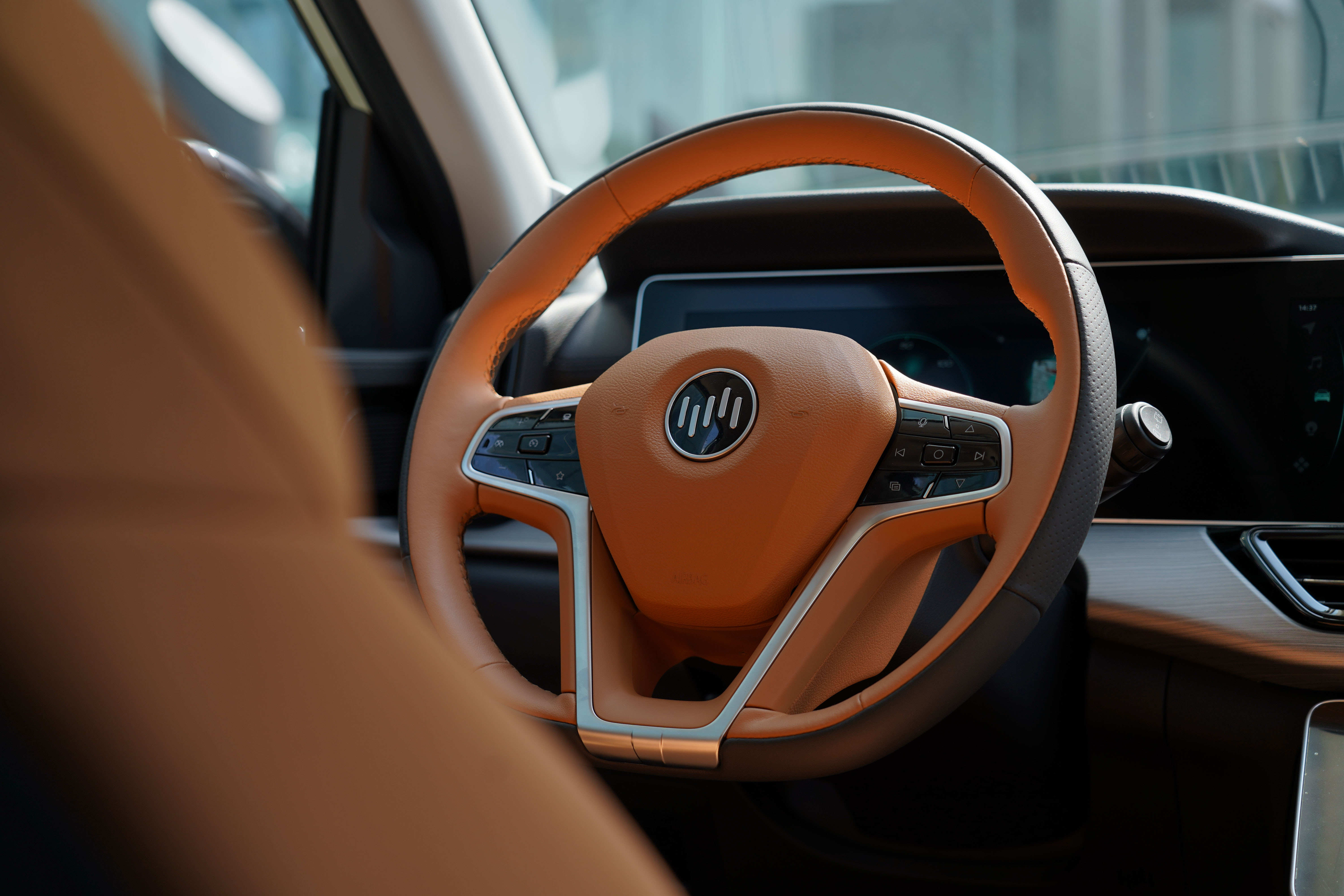
Different from the instrument panel and the central control large vertical screen setting on EX5, W6 adopts the double-screen design which has become a common template in the industry in recent years.
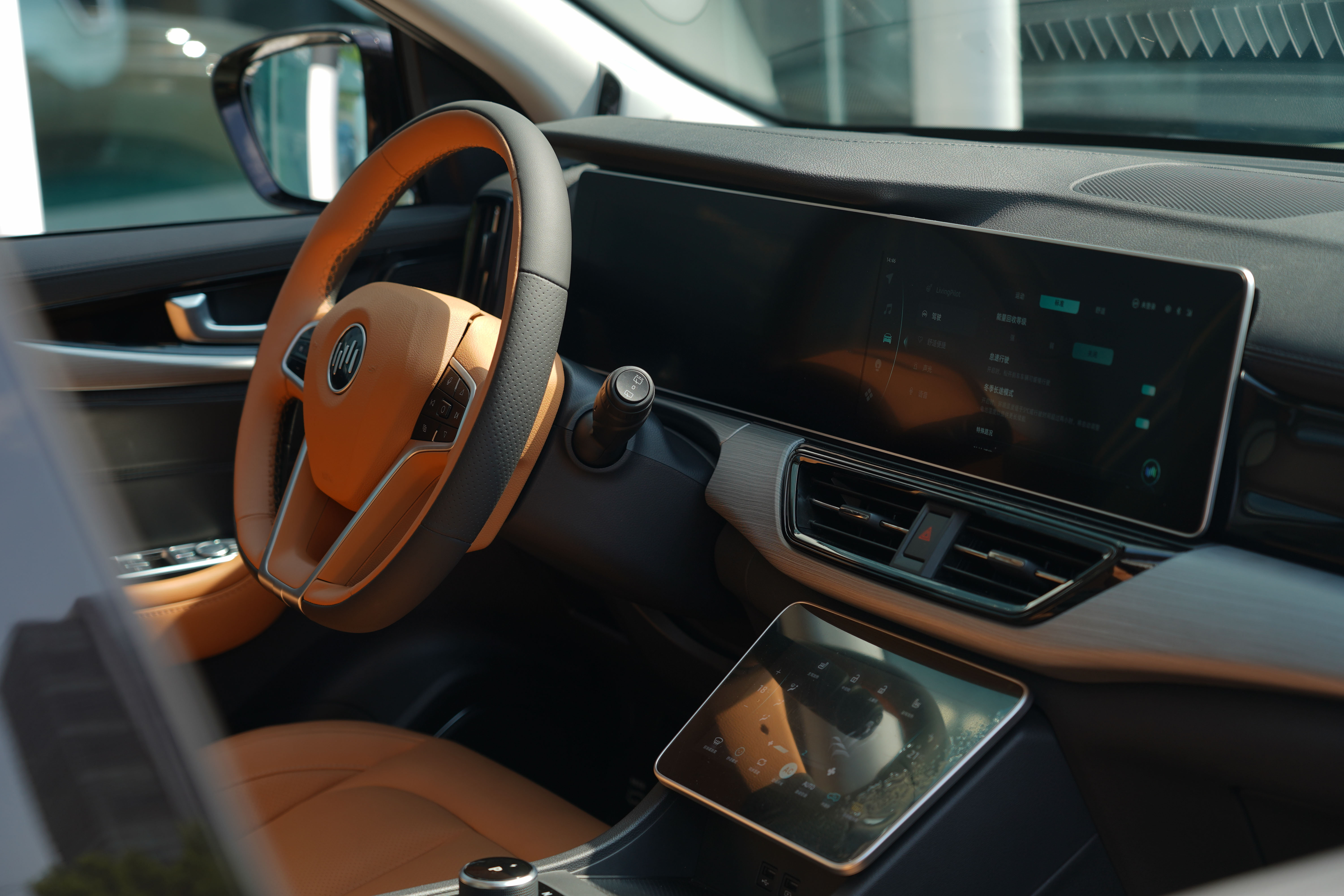
In addition to the central control screen, a independent full-vehicle control screen, similar to the one used in the Ideal ONE, has been added below the central control screen. Many commonly used settings are integrated into this screen.
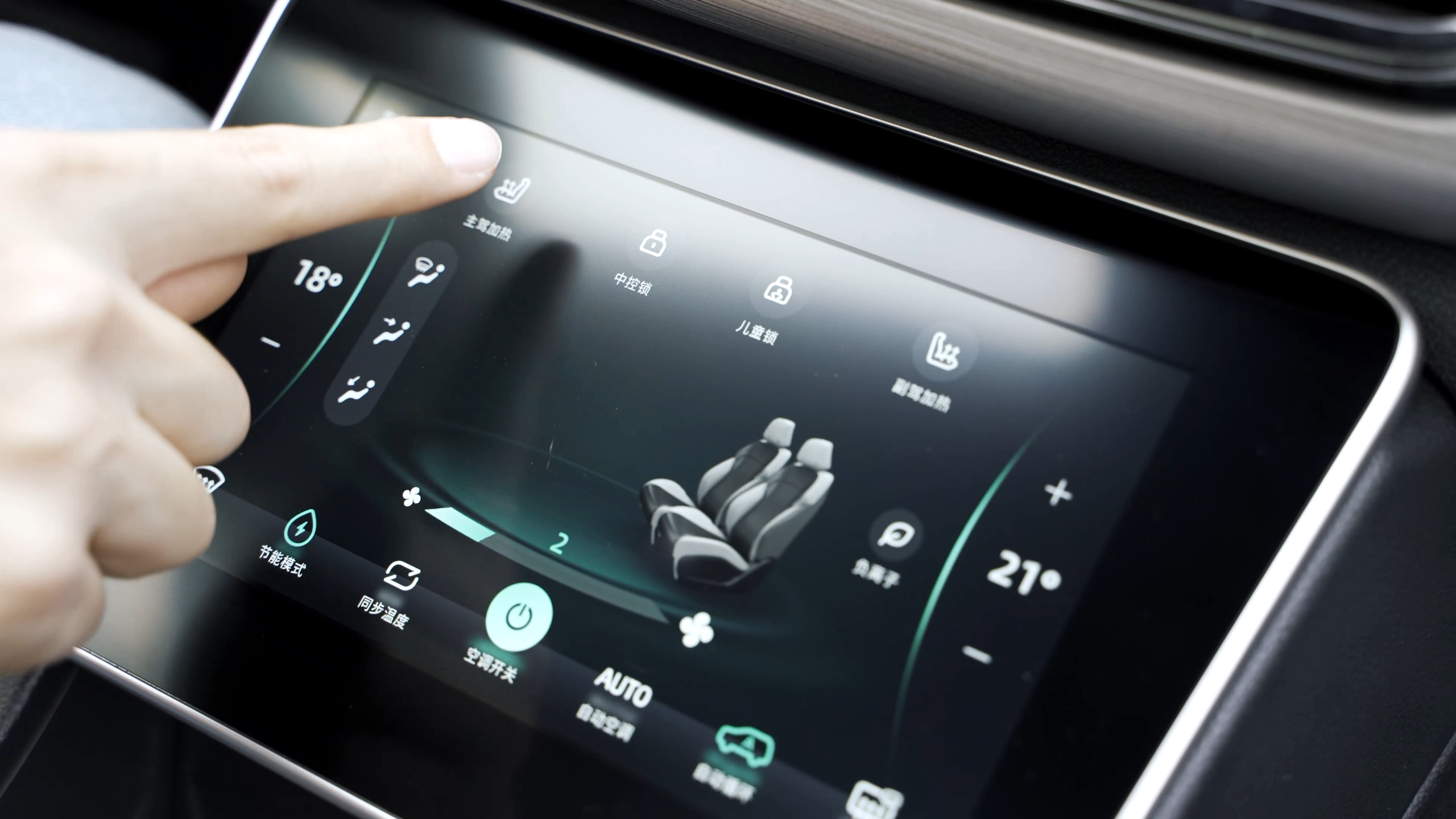
On this screen, horizontal sliding can quickly adjust the air conditioning wind speed, and vertical sliding can adjust the temperature. The operation is very intuitive and there is no learning curve.
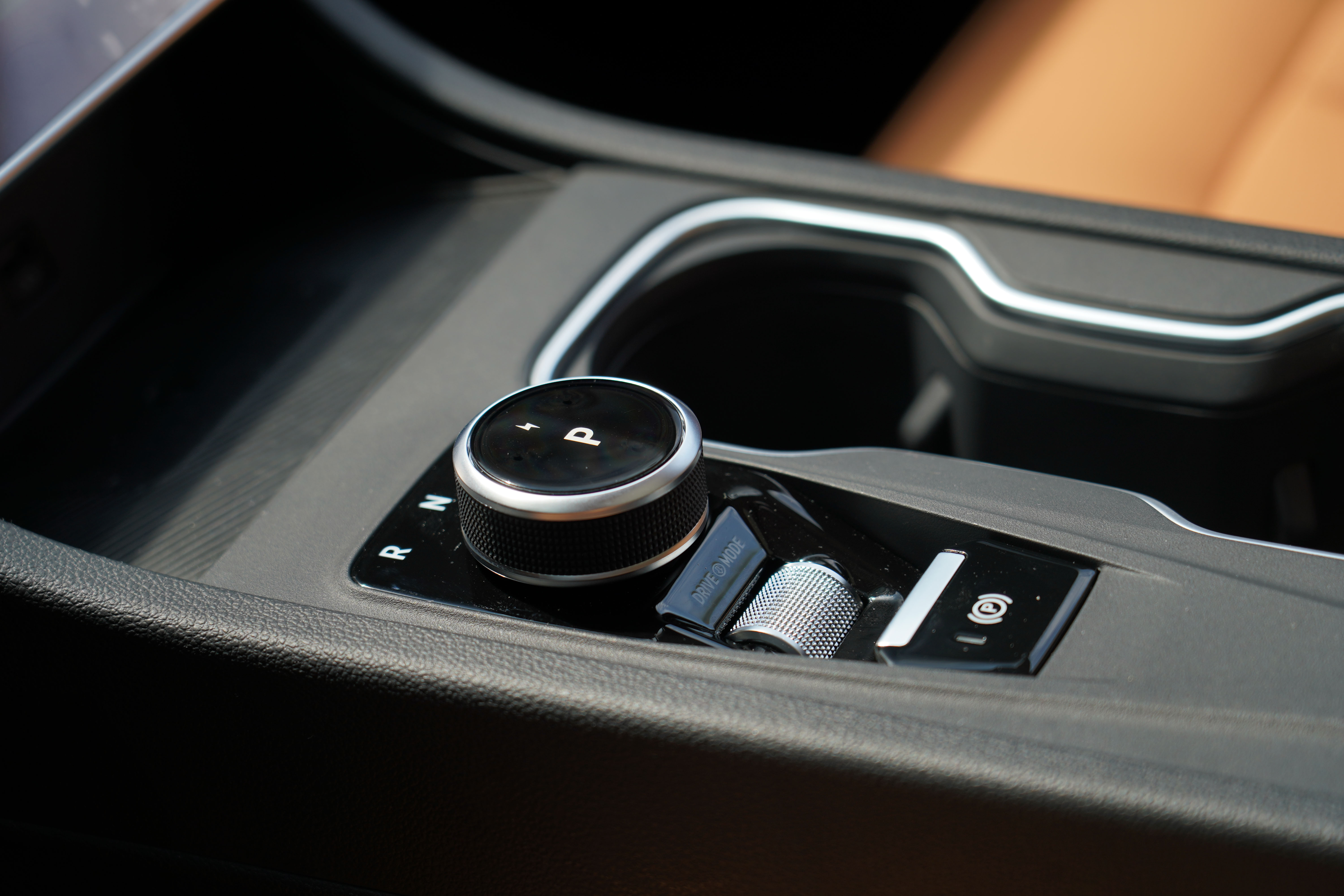
After a few minutes of inspection, I found that basically only the gear shift knob on the central armrest could be recognized as a WmAuto element on the entirely new and stylish interior design. However, most of the design does not have enough differentiation in the current industry heavily influenced by homogenization, so this new interior design still lacks a sense of freshness.
In comparison, the vehicle-mounted system of the W6 did surprise me a bit.
Speed is important, but not the only thing
Let me firstly talk about the feeling I have after using the vehicle-mounted system. In the first half minute, I found that the W6 vehicle-mounted system was quite responsive and the UI switching and various setting actions had many animation effects. The combination of the two gave a very smooth experience and it was among the top smooth experiences for new cars this year.
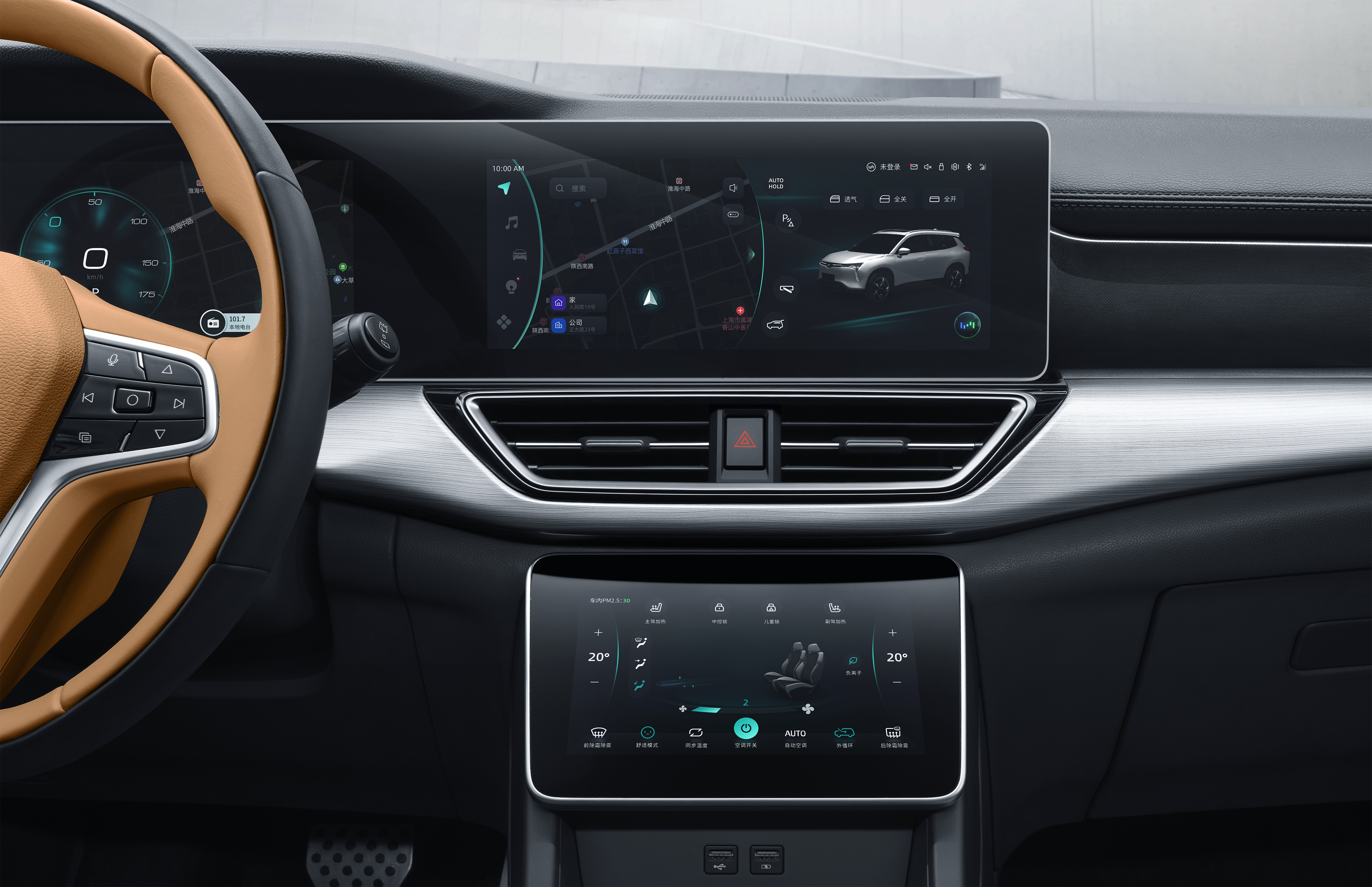
Later, I checked the parameters and found that the W6 vehicle-mounted system uses the Snapdragon SA8155 chip, which is the car version 855 and has three times the performance of 820A. It is basically the most advanced option among current mass-produced vehicle-mounted system chips. The screen refresh rate is also 60 Hz, which is not so common among the 200,000 vehicle-mounted screens, and there are no problems with the hardware configuration.
Then, let’s talk about the experience of the interaction of the vehicle-mounted system. One of the good points is that the menu hierarchy of the W6 vehicle-mounted system is clear. The display content of the central control screen is divided into three parts:+ There is an exquisite 3D vehicle model on the right side displaying the vehicle status, with quick buttons for functions such as door lock and all car windows up and down.
-
The middle part defaults to displaying the map, which will become the main menu screen in the settings and application interface.
-
The permanent menu bar on the far left of the central control screen has major categories such as navigation, music, vehicle settings, and applications, making it very convenient to switch between different needs.
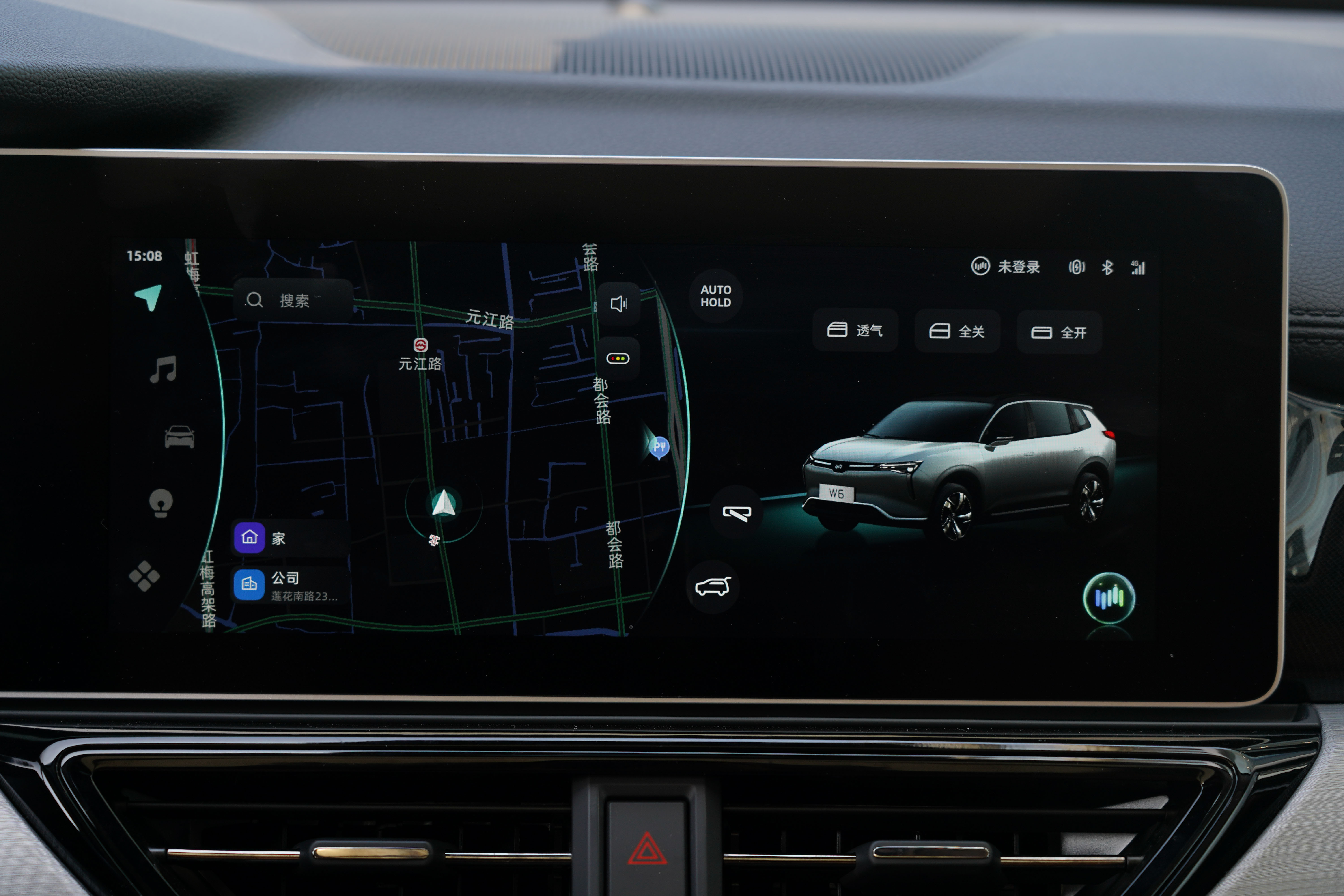
In terms of the overall layout and hierarchy that affect the basic interaction experience, the W6’s car machine achieves enough intuition. With intuitive inertia operation, you can easily find the corresponding function, which is a significant improvement compared to previous car models. In terms of function and application, there are two highlights of this car machine. One is the custom car interior scene card “WM Quick”, and the other is the interconnected applications with the phone.
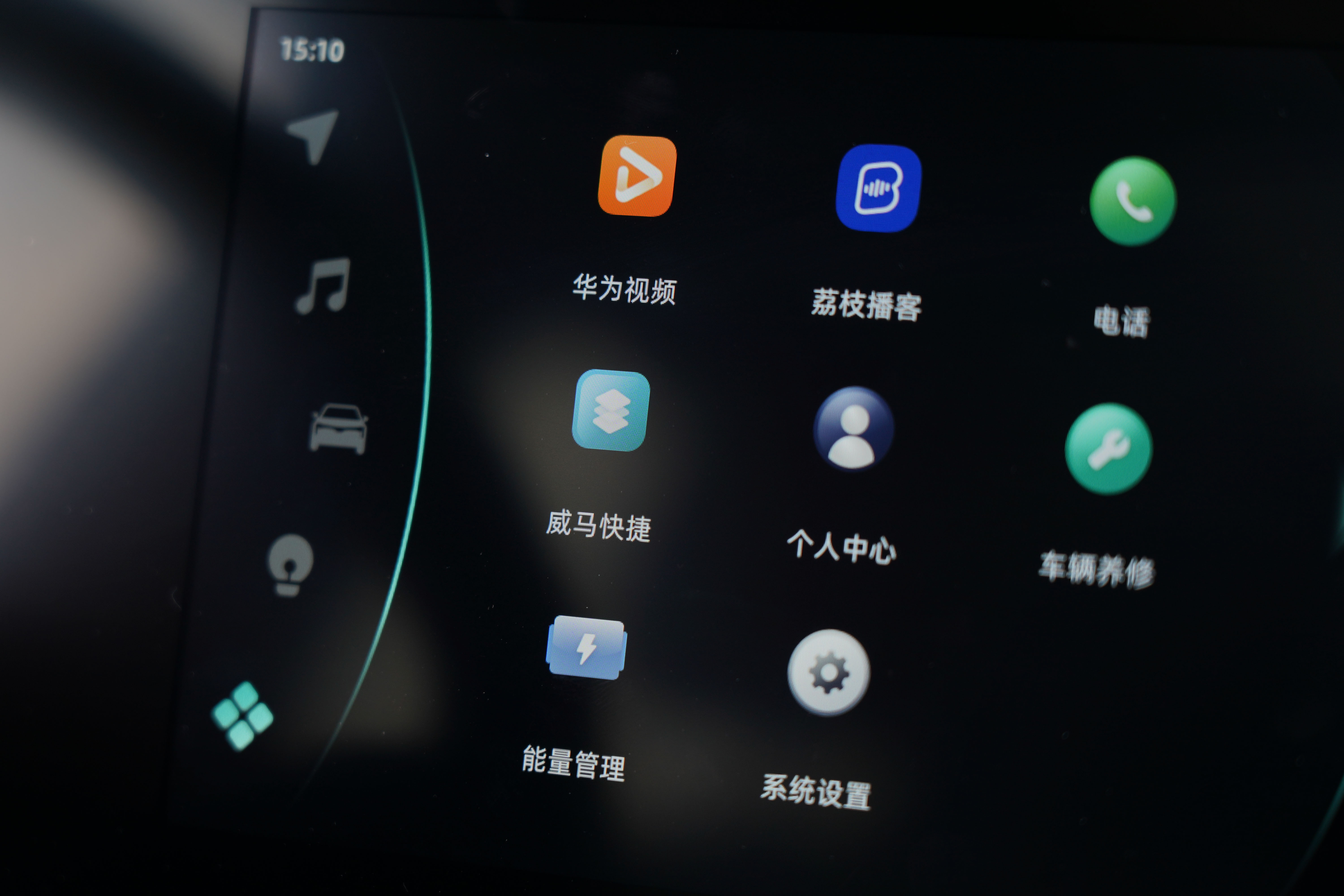
There is a function on the Ideal ONE that I really like called “Nap Mode”. After turning it on, the vehicle will adjust the front seats to the most lying position, and the screen brightness in the car will be adjusted very low, and a snowy mountain wallpaper will be displayed. This is a specific car interior scene.
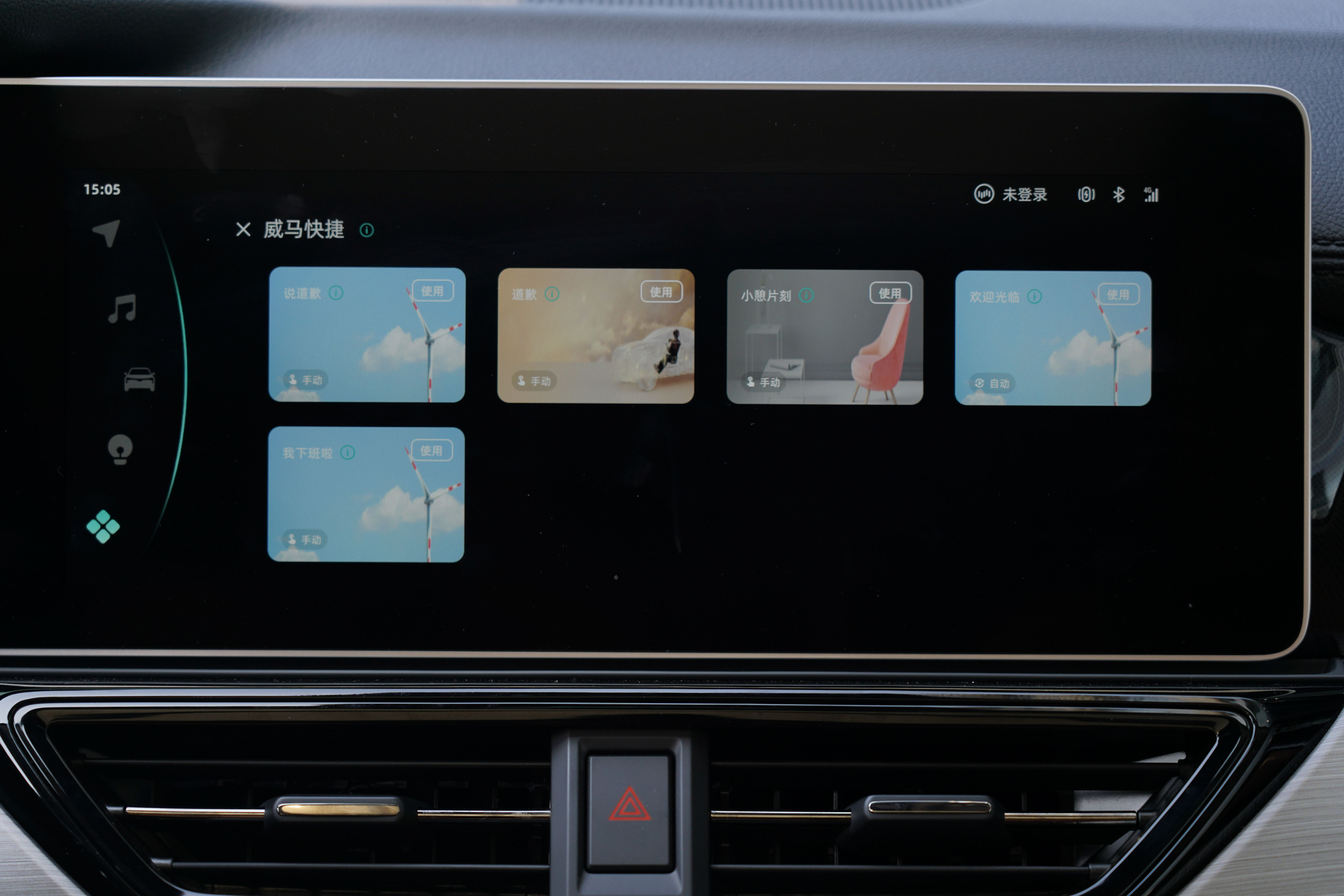
With the W6, you can customize many scenes according to your needs, including settings such as air conditioning temperature, wind speed, window opening, ambient light color, whether to play music, and so on.
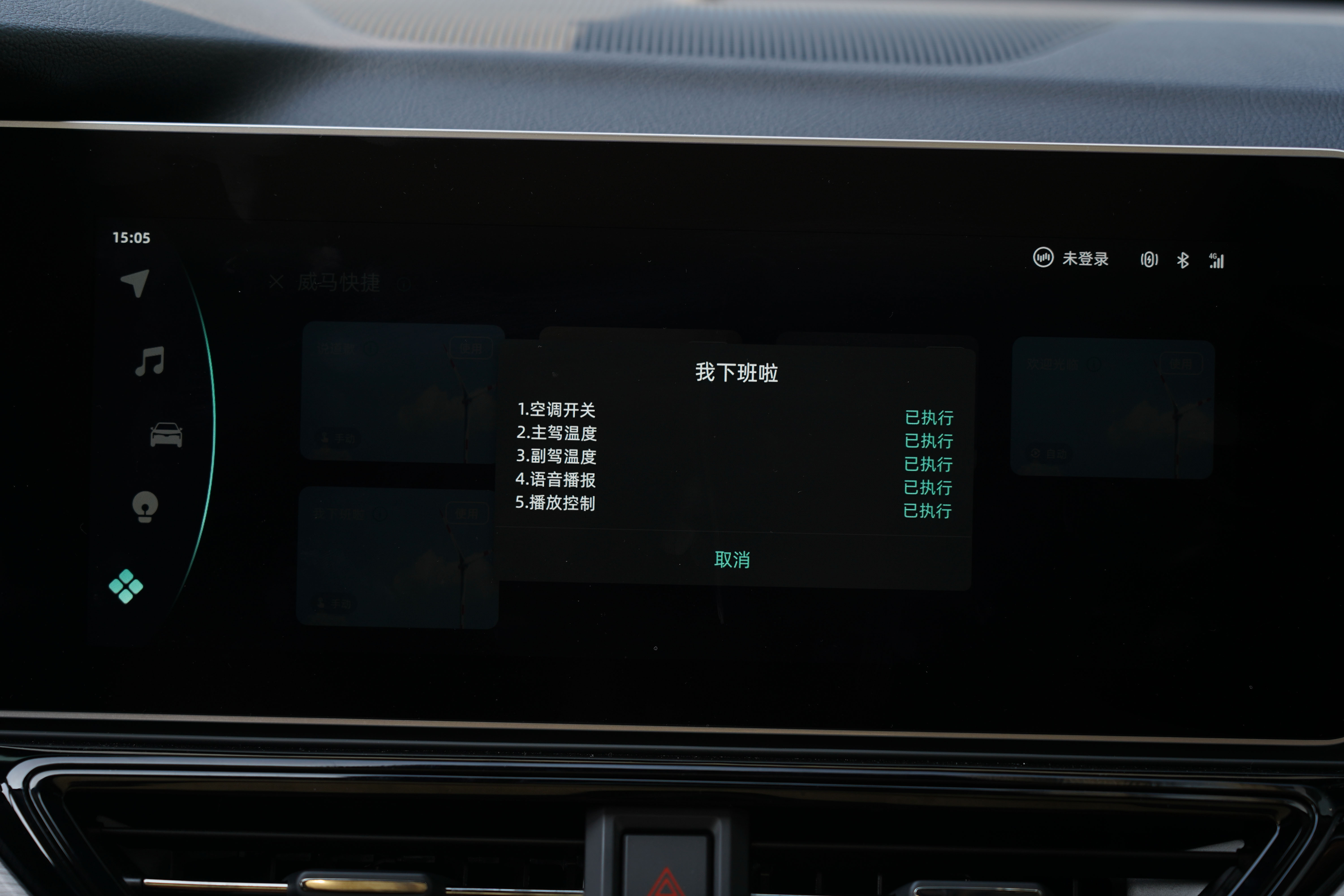
For example, in summer, when I just get in the car, I usually turn the air conditioning to the lowest, open the cold wind to the maximum, and open all the windows to quickly cool down. With the W6, you can save this combination as a scene card and one-click it in the future.
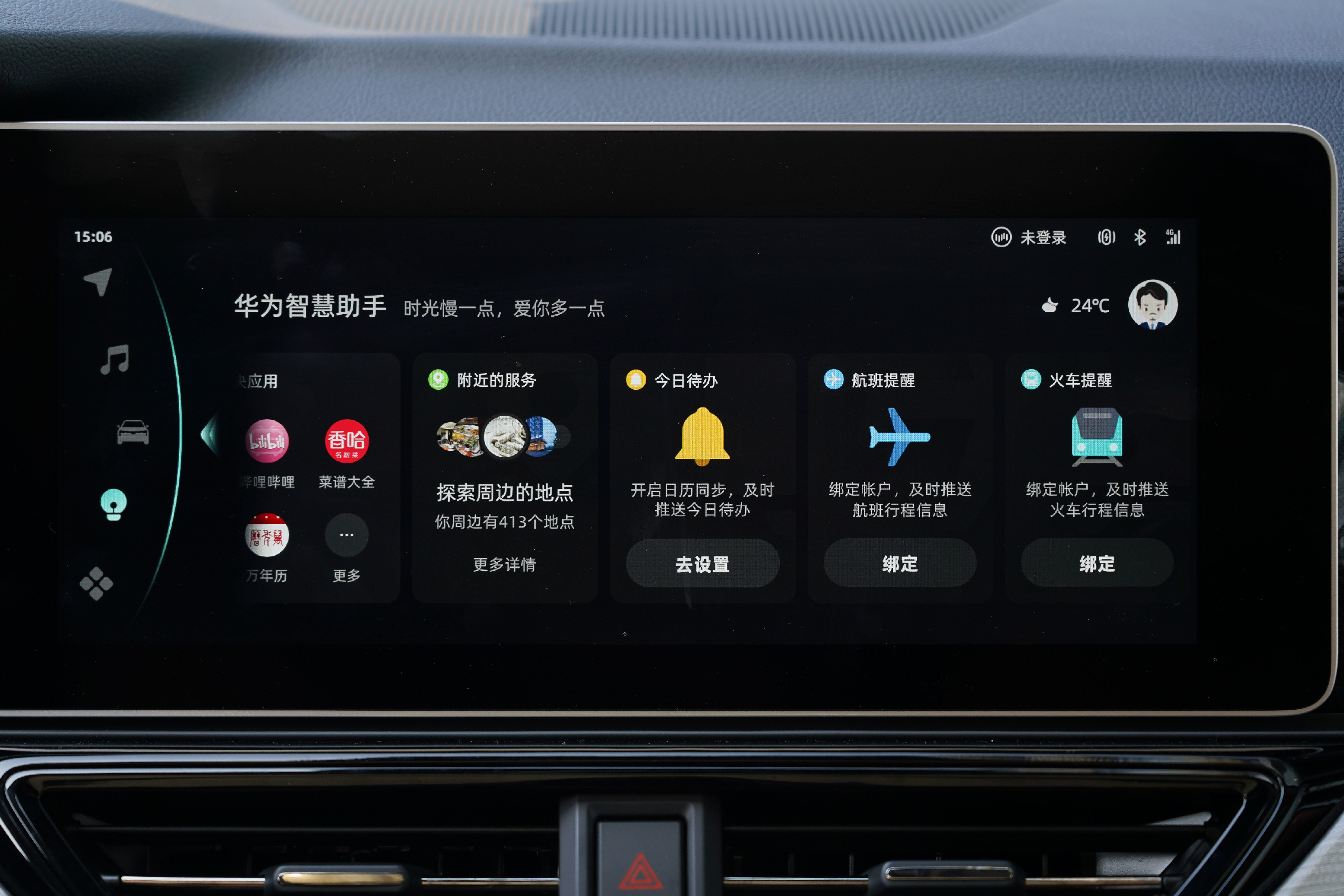
The built-in Huawei smart assistant in the central control has many commonly used apps, and some of these apps have been integrated with the phone in terms of ecology.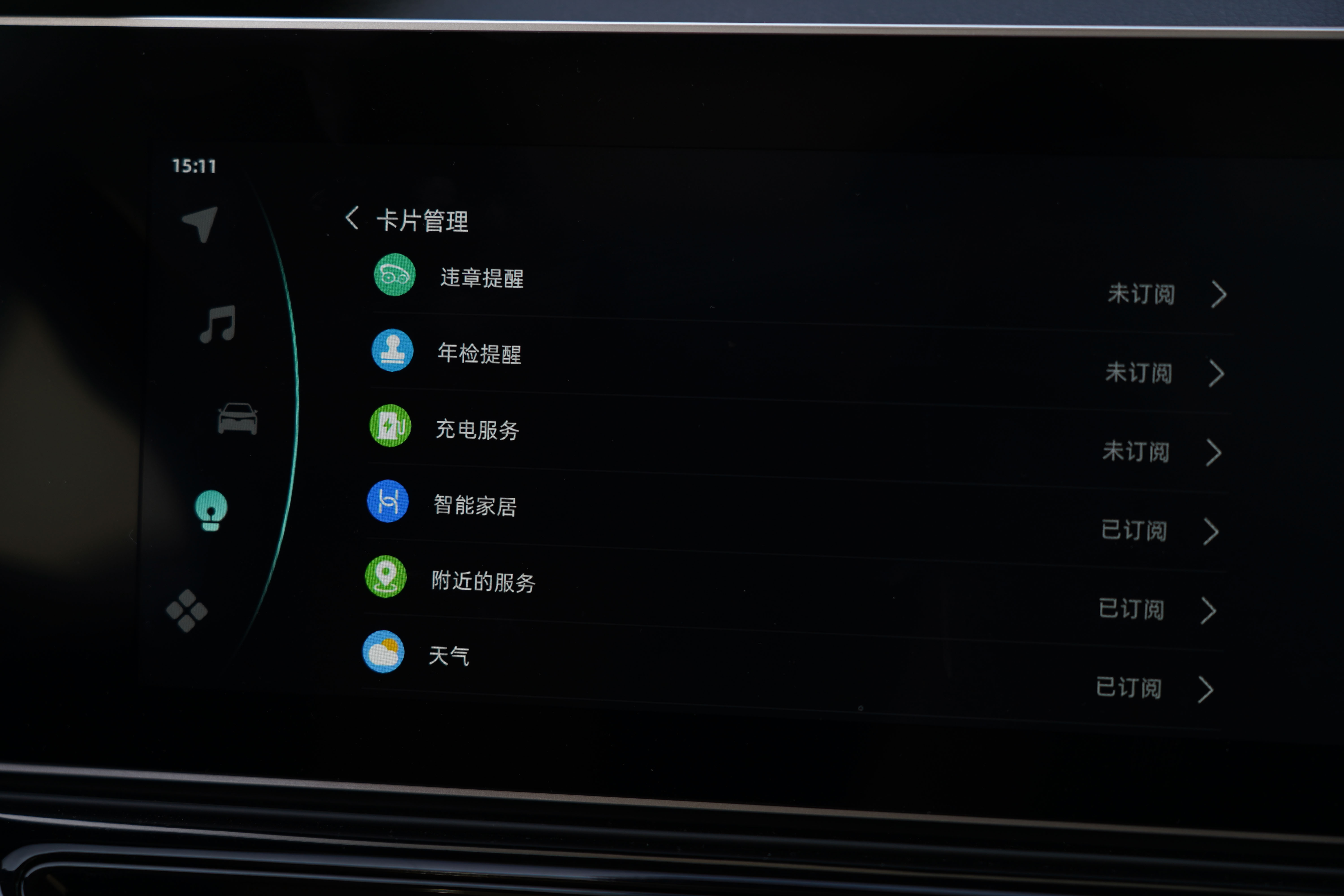
Personally, I think the most practical and widely used function is the synchronization of mobile navigation with the car system. After scanning the QR code to bind the device on the car system, users can send the address to the car system using the built-in navigation system on the mobile phone.
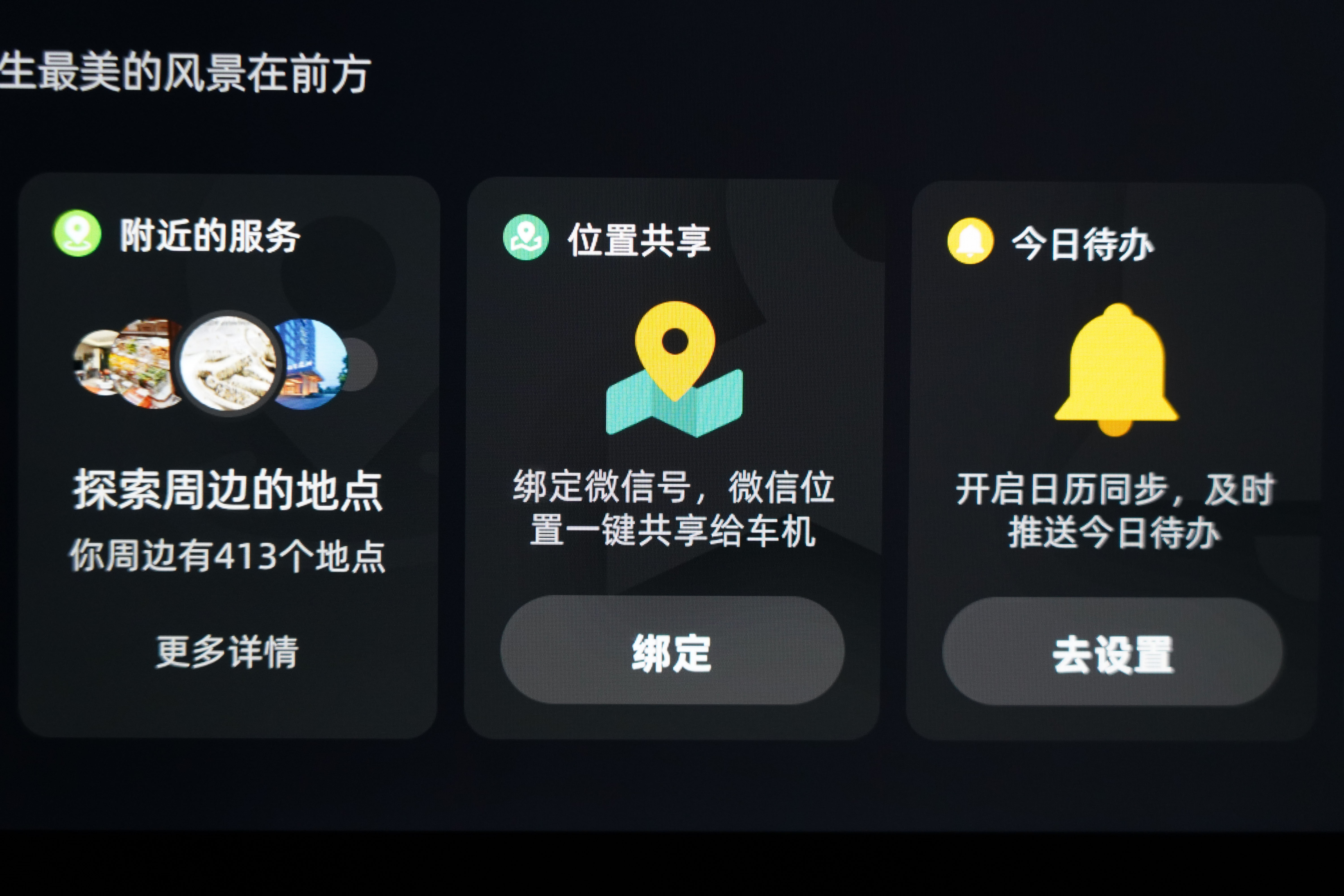
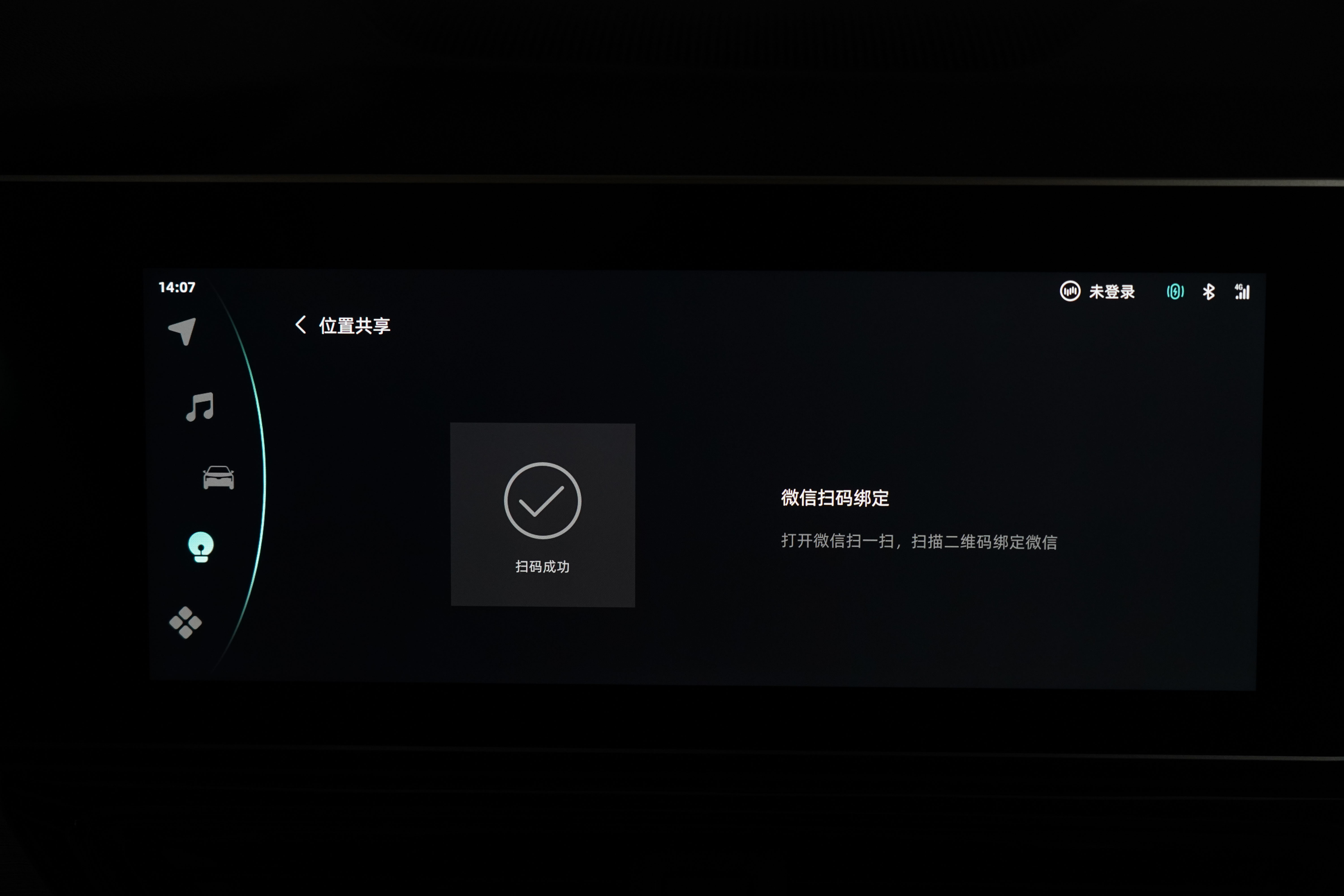
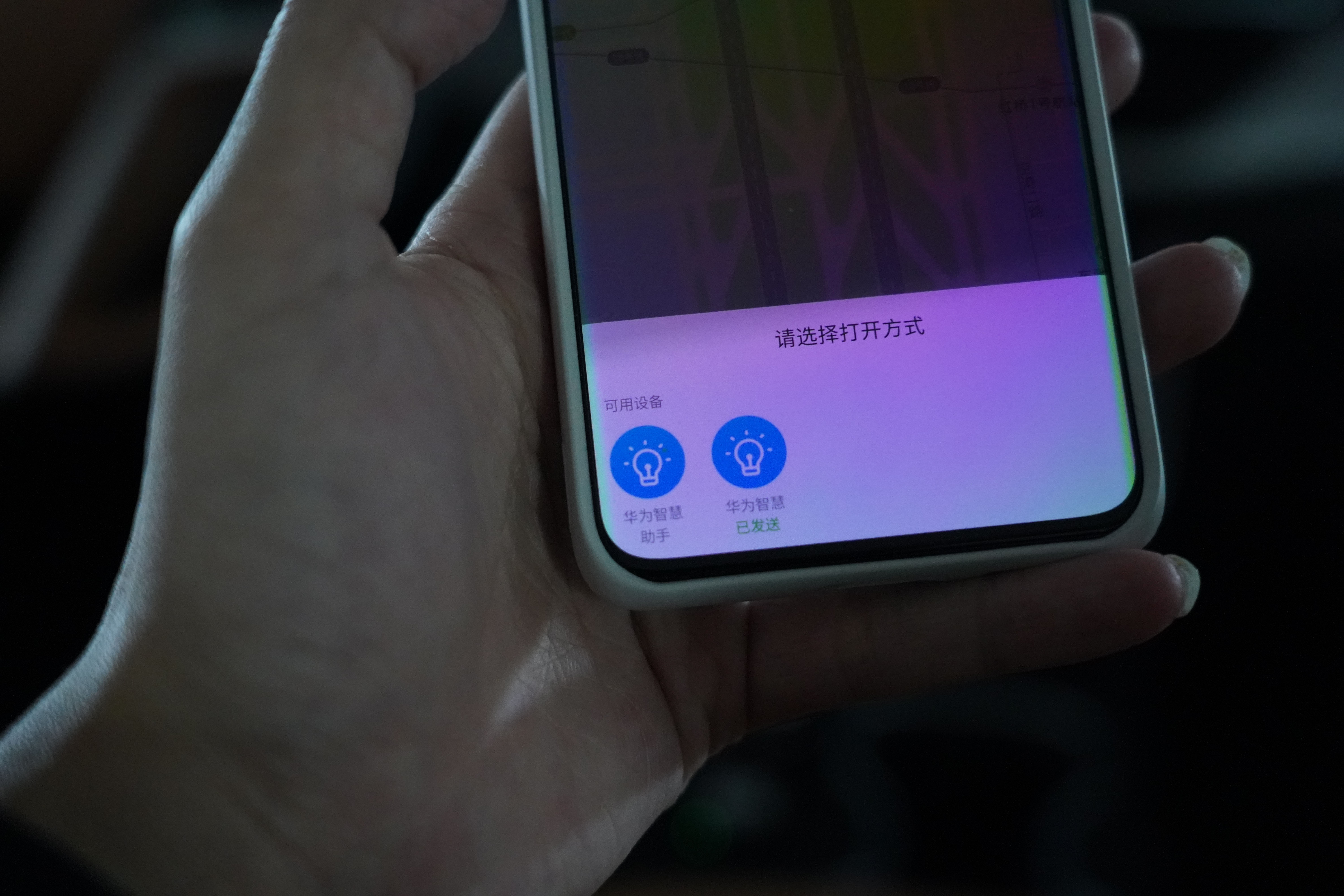
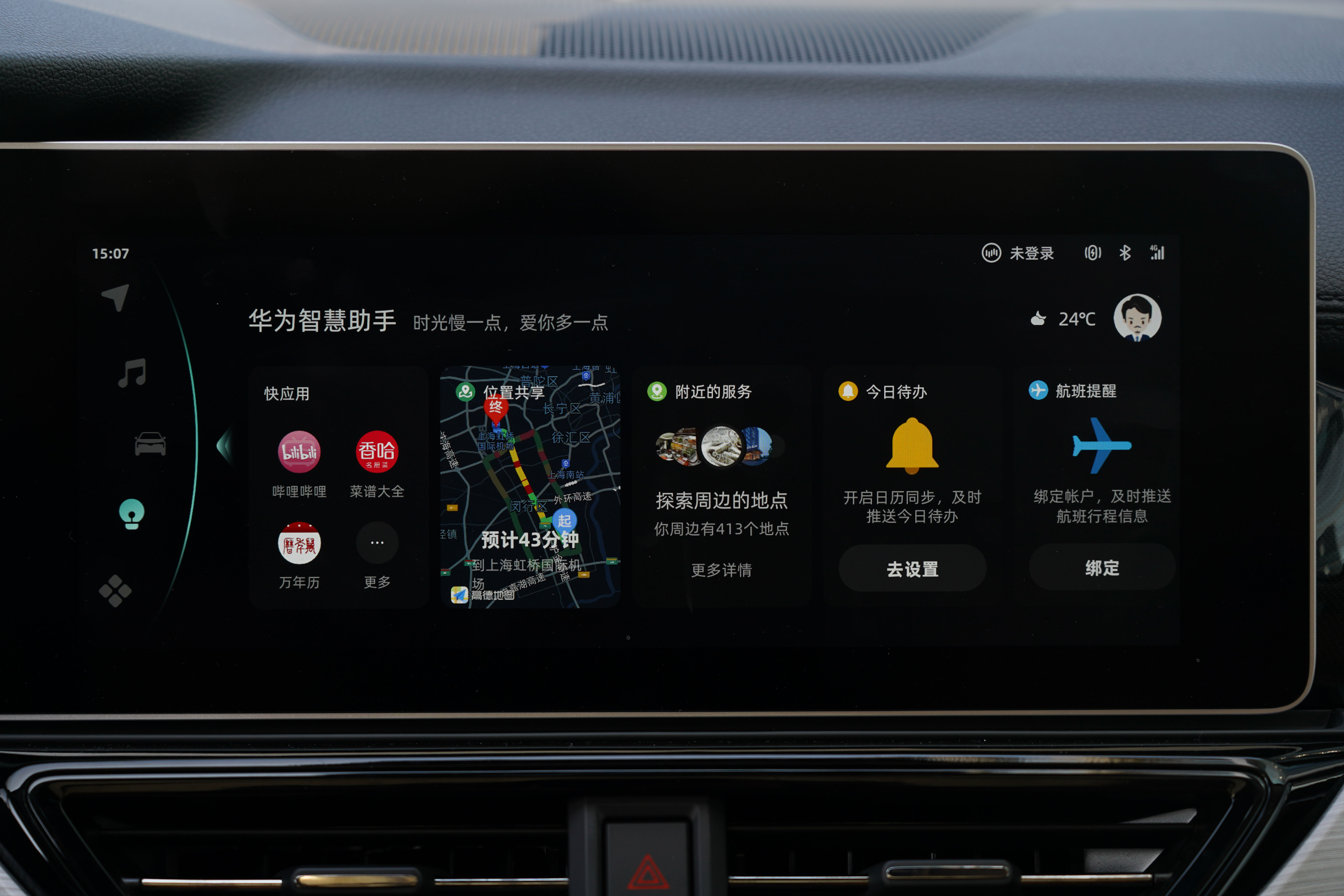
The voice control technology in the W6 model is currently above the industry standard for intelligent electric cars, and there are many voice-controlled functions. The system supports driver and passenger area recognition, and can have a continuous conversation.
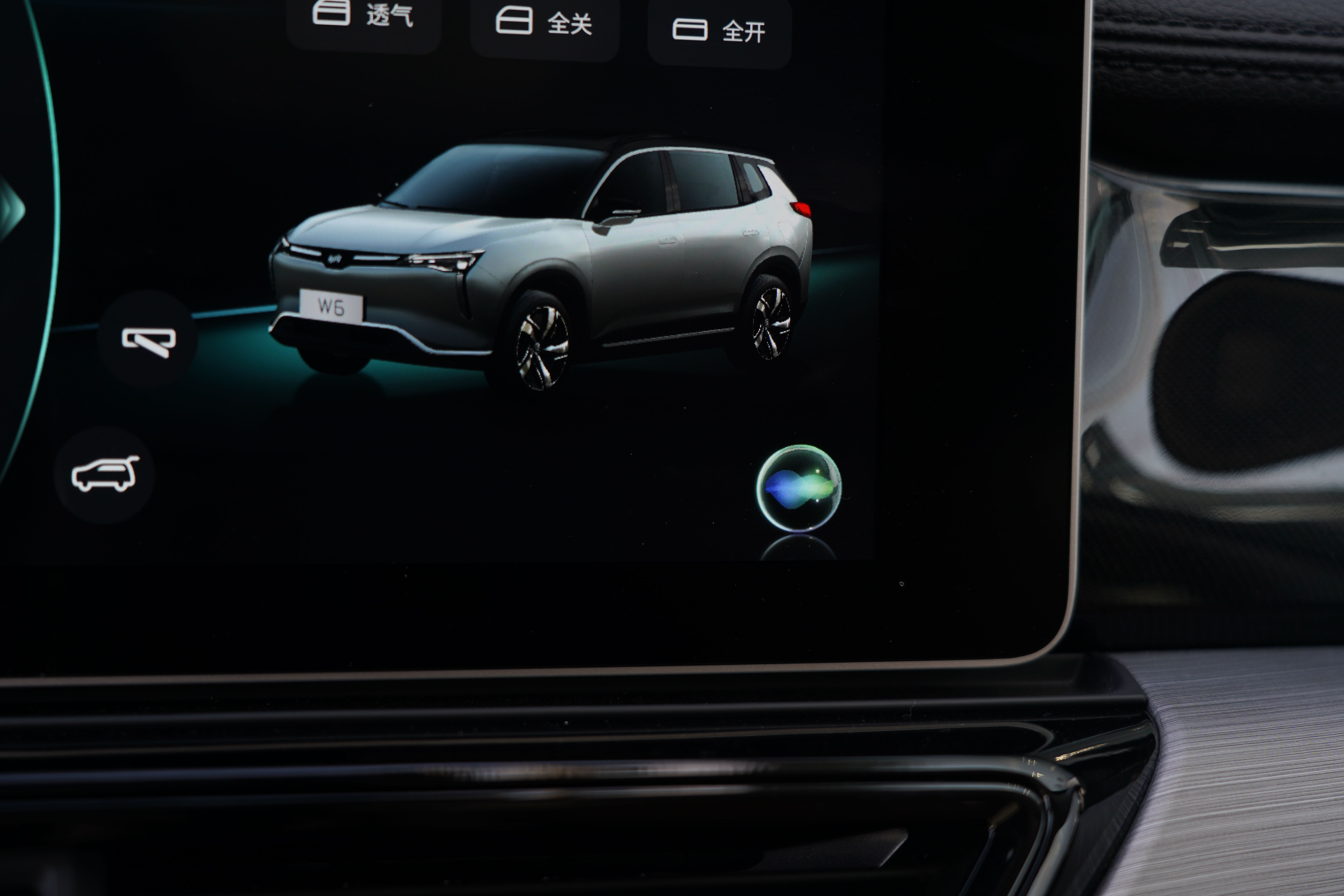
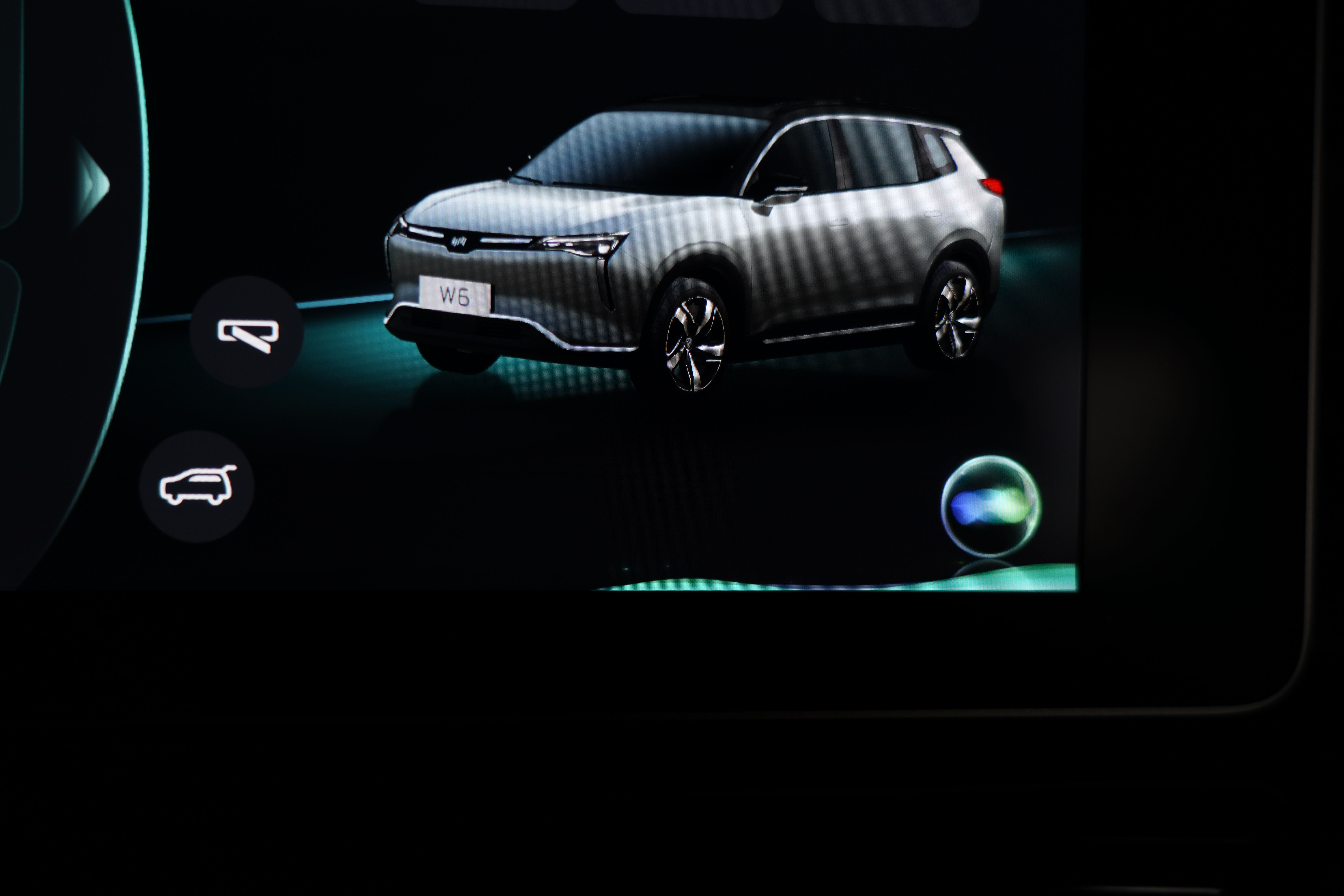
After the voice assistant is activated, there is a wave-shaped animation that I personally like, just like the P7 model.
However, I want to criticize the color scheme of the UI. If it weren’t for the smooth animations, the black background with green borders would look a bit outdated. Additionally, the UI design on the square center screen is a bit mismatched, with curved edges on a rectangular screen. However, the most important interaction and information display on the car system is well-designed, so overall, I think the W6 deserves a good rating.
After exploring the car system for nearly half an hour, I finally arrived at the part I was most interested in: parking.
Automatic parking, add another “unmanned”
The reason why I am so curious about W6’s parking system is mainly because it has autonomous valet parking (AVP) function, which is also the L4 level that WM Motor officially promotes, demonstrating its parking capabilities.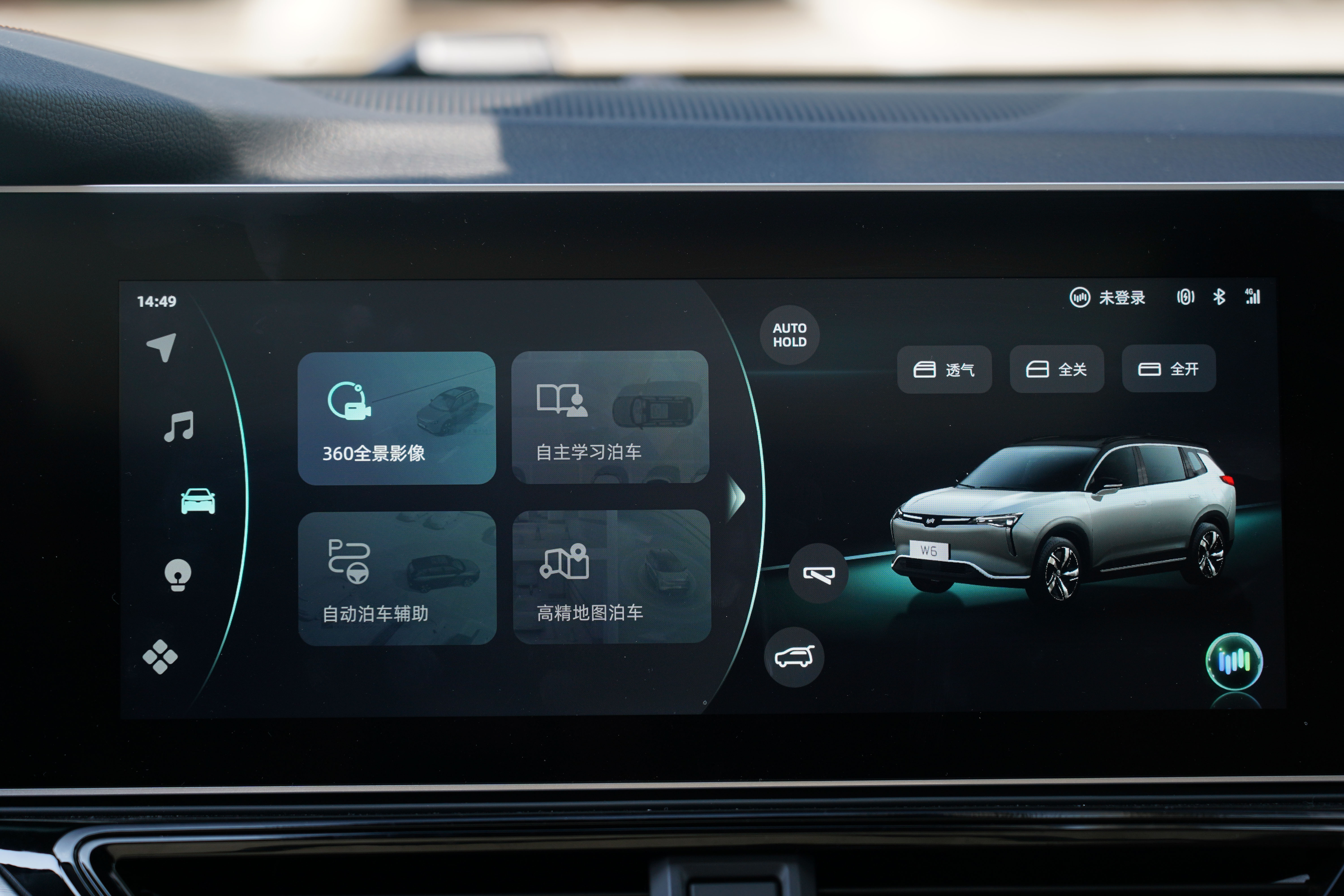
After accessing the parking function page in the car’s system, there are multiple parking options available, among which the most powerful one is the high precision map autonomous parking. According to the official introduction, once the car enters the area, you don’t need to do anything, as the car itself can find a parking spot by crossing layers in the parking area that has high precision map data and complete the parking process.
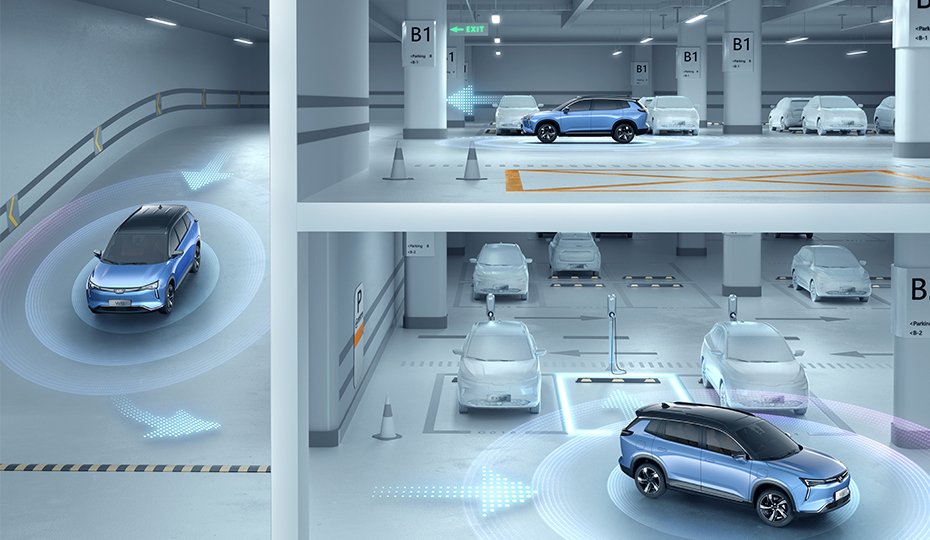
Unfortunately, the parking lot where I was at did not have high precision map data. Therefore, I tried another function that day, which is autonomous learning parking.
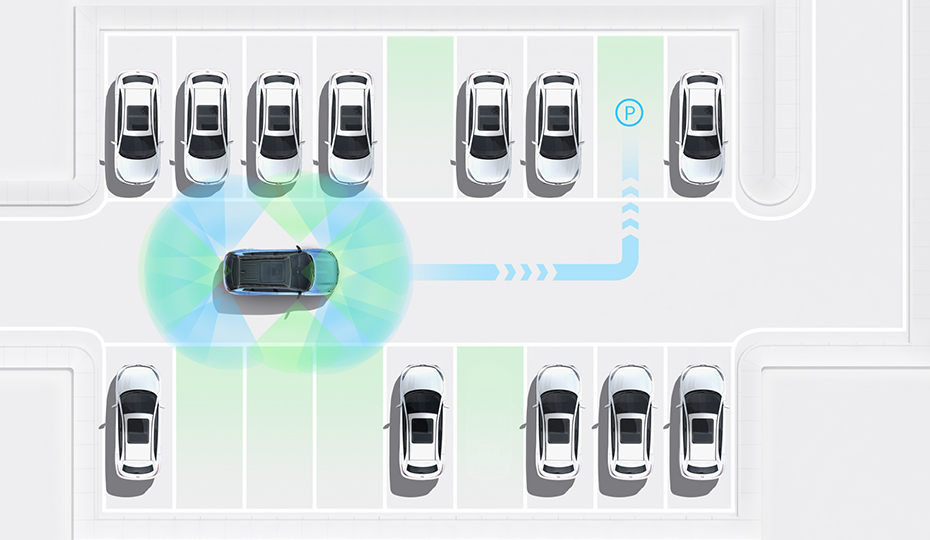
Since the word “learning” is involved, you need to teach it how to park. However, I had to learn how to do it before teaching it. Thankfully, there was an instructional video prepared in the car’s system. The video roughly demonstrated a process where you first set a starting point within 100 meters, then manually park in a parking spot, set an ending point, and save it. The system will then record the environment around the path and plan the parking path from the starting point to the ending point.
I followed the process and parked in a challenging spot. The parking space was a vertical one, and there were rows of horizontal parking spots on the road in front of it, which were already filled with cars. Therefore, the parking route was actually only half the width of a car. If I didn’t approach the parking spot properly, the front of the car would easily touch the cars parked sideways.
After manually parking the car the first time, the system took about 8 minutes to save, followed by the generation of a custom autonomous parking card. Then, I drove the car back to the starting point and used the AVP function with the saved card. After confirming the parking, the car started.
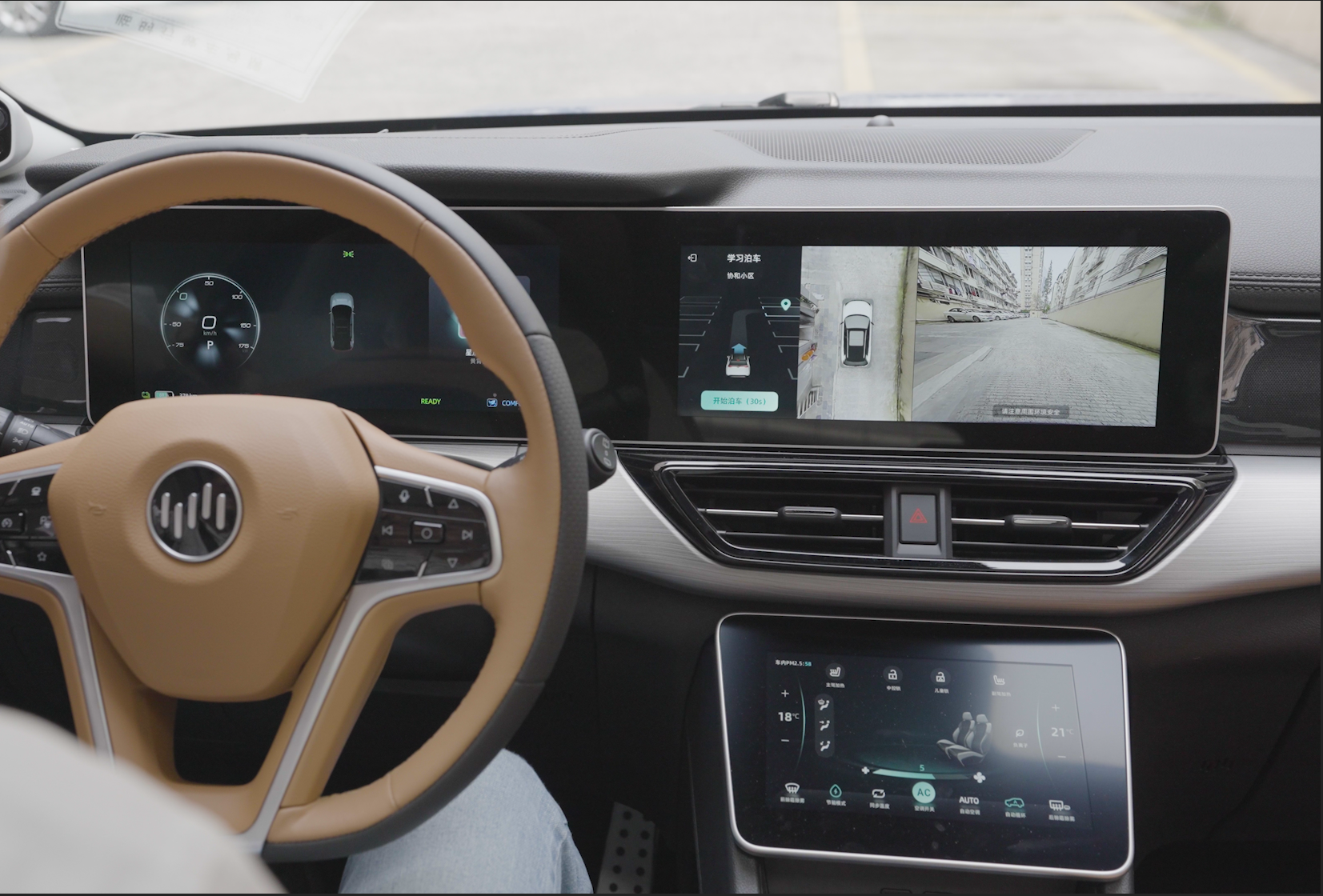
Then, I found that the car’s path and mine were different. The car’s path was even more precise and smooth, with fewer adjustments needed. The position it chose for backing into the parking space was also very reasonable.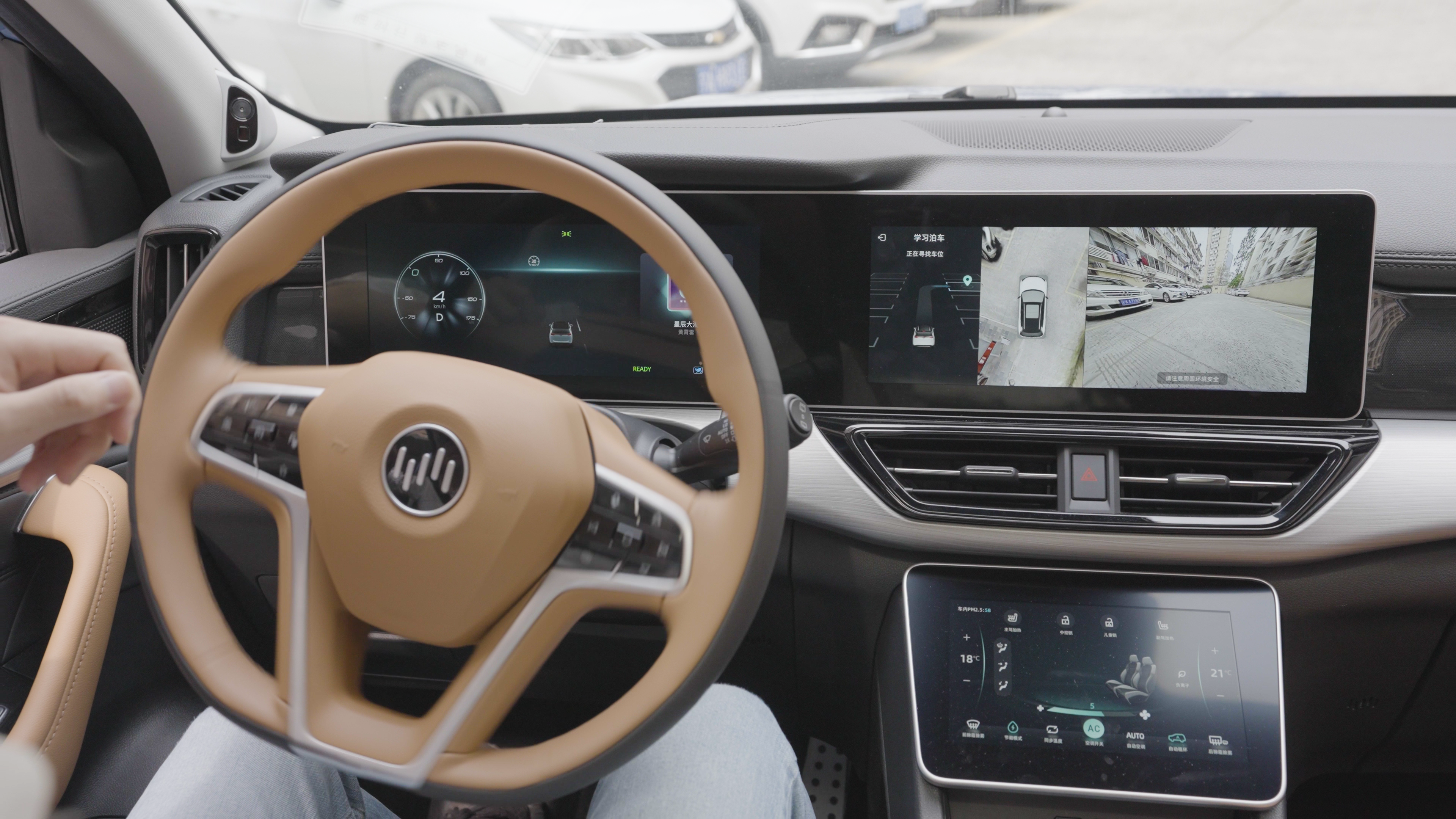
Like most automatic parking cars, W6 used two attempts in total to park in reverse. During the second attempt, I was a bit nervous and worried that the car would scratch the car parked on the side of the road while moving forward. In addition, the W6’s forward movement was quite limited, and it only stopped when the front end turned red in the panoramic image.
However, it should be noted that the vehicle’s speed was well controlled during the second forward movement, so although the distance was very limited, I still did not take over in the end.
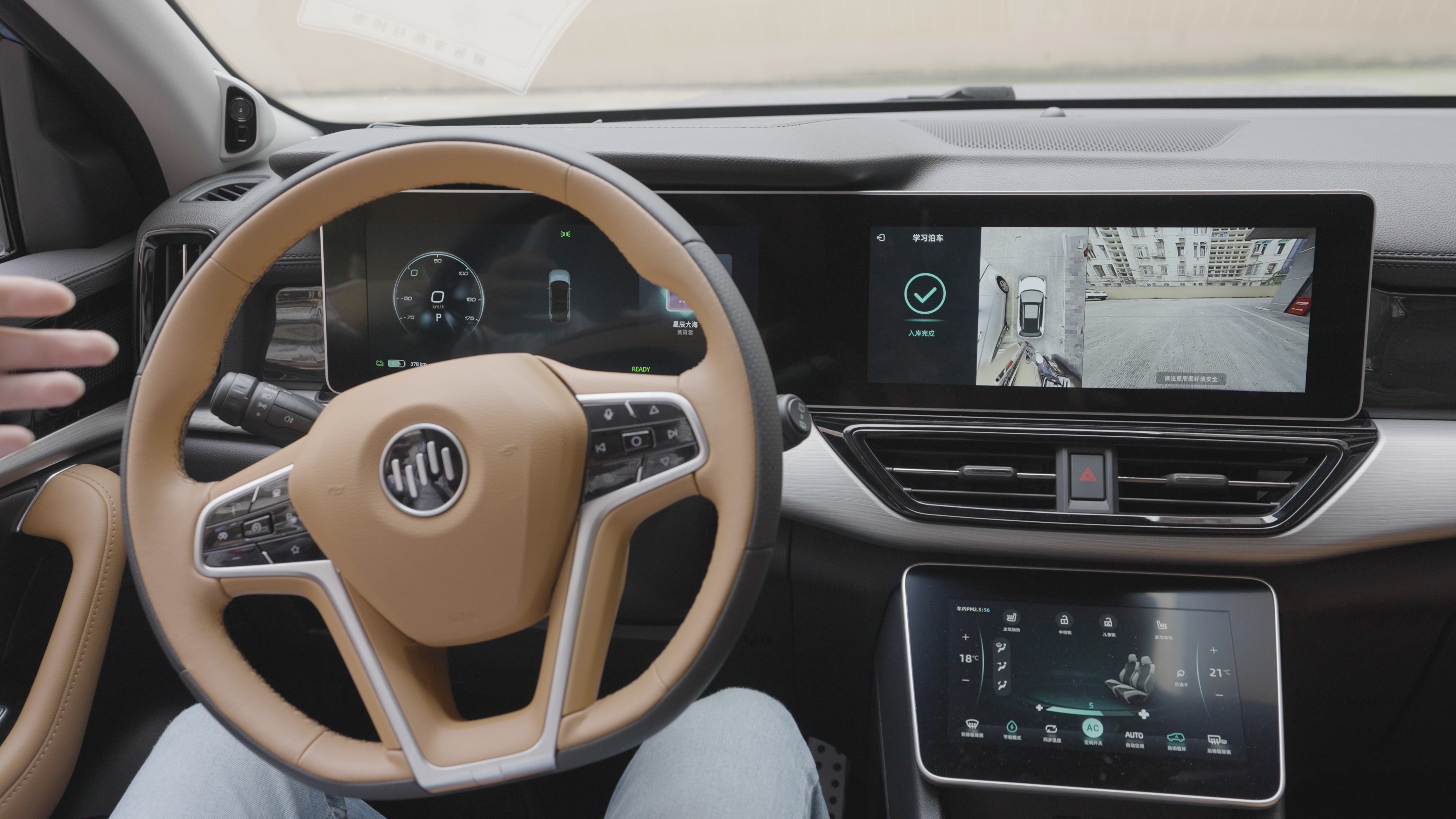
The posture of the completed parking is very neat, and there is almost equal space on both sides of the parking space. The rear wheels are also pressed against the limit. When I parked manually, I didn’t pay attention to these details, and the body was still tilted when I parked.
I am still very surprised by the performance of this trip. After that, I tried several other parking spaces, which were easier than this one, and they all successfully parked.
After an hour of unmanned autonomous learning parking experience, the parking ability of W6 met my expectations, but there were two bad parts in the experience.
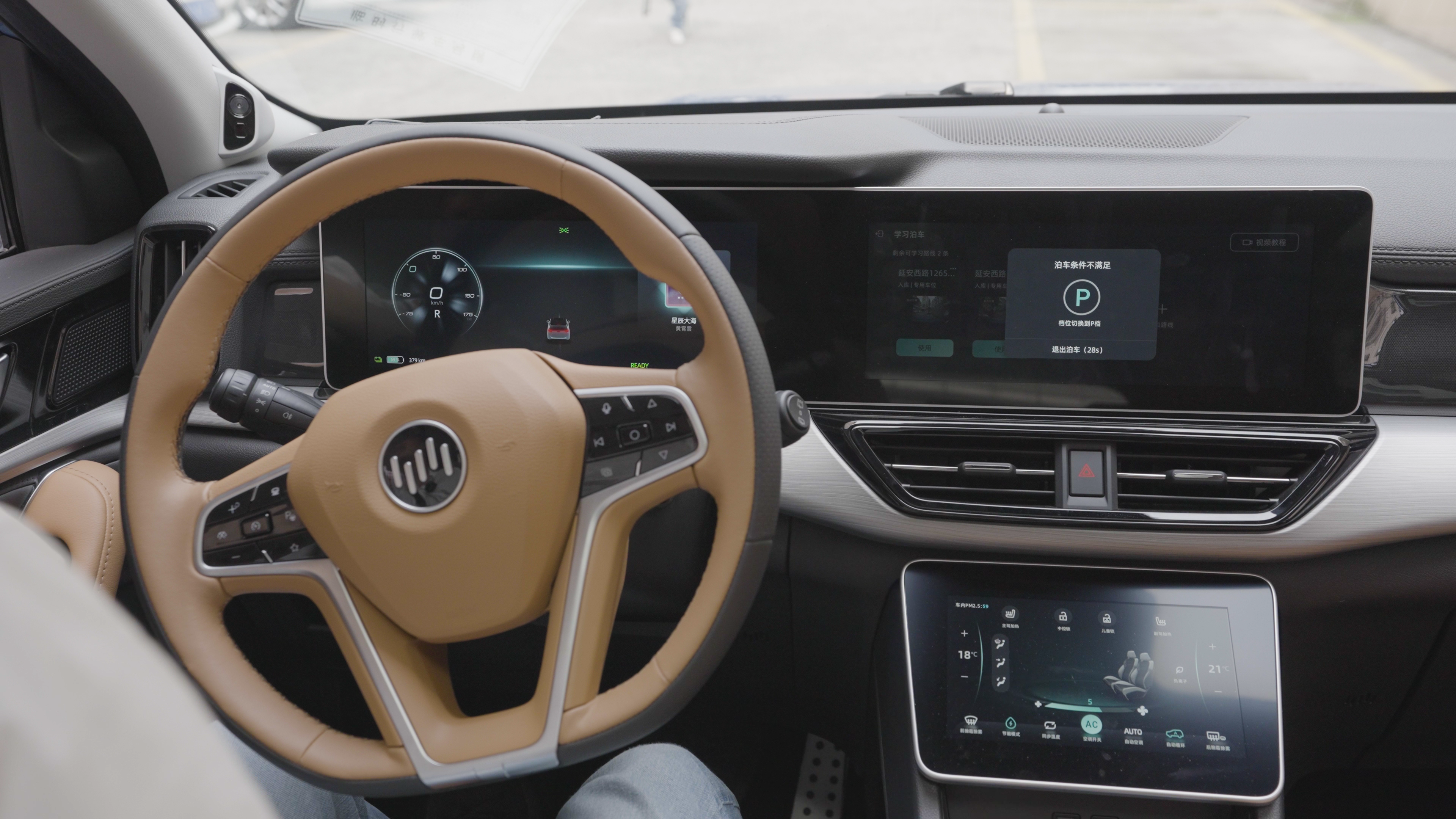
First, the system’s save time after manual teaching is too long. Second, the vehicle does not always match when starting near the starting point. There were several times when the vehicle did not move after I clicked start, and the system prompted an unknown error and automatically ended the valet parking. However, after trying a few more times, the vehicle started normally, and the parking was successfully performed after the car started moving that day.
I think this function is very useful for users with fixed parking spaces. After arriving at a designated location every day, they can get off the car and use their phones to remotely park the car automatically. A card can also be set up for leaving the parking space. The system can save up to five parking cards, and the home and office entrances and exits add up to four. The remaining one can store another commonly used location.
After experiencing unmanned autonomous learning parking, I also have greater expectations for high-precision maps that theoretically perform better in parking. If I find a parking lot with data in the future, I will definitely try it again.
The parking lot part of the test is completed, and then I drove W6 home and felt the dynamic performance of the vehicle on the road.
Second half of the test drive, felt a bit ordinary
Normal power, energy recovery worth mentioning
On the power configuration, the W6 is a front-wheel drive single motor, with a maximum power of 160 kW and a peak torque of 225 N·m. This data looks like a very household setting on this car, and it does feel that way when driving it.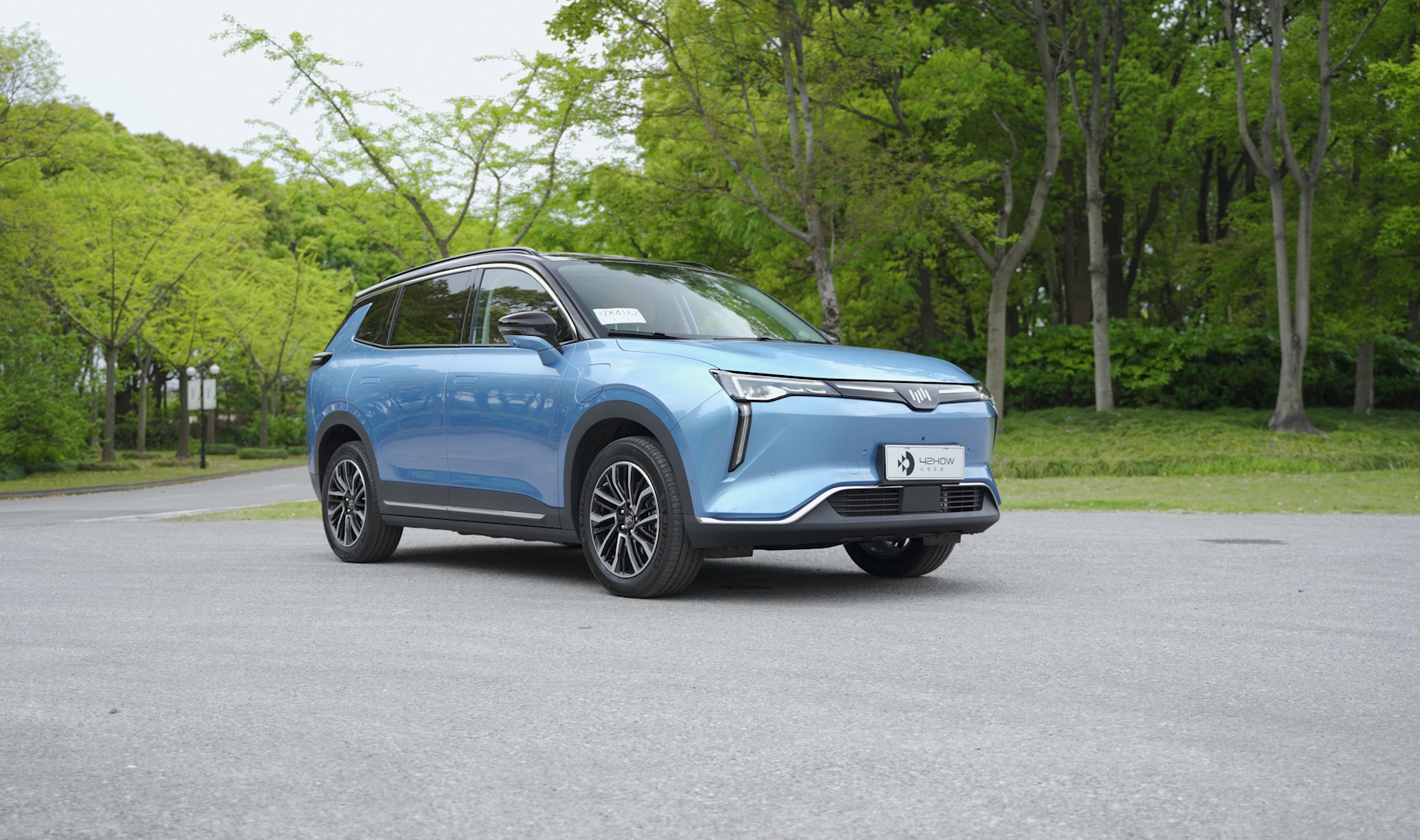
The official 0-60 mph acceleration time of the test drive car is 7.9 seconds, and the push-back sensation when the accelerator is pressed down during driving is not particularly strong. However, in the SUVs of the same class, it is still a normal level.
In a stationary state, most front-wheel-drive electric vehicles will experience tire slip when pressing the accelerator, and the W6 is no exception. Fortunately, the W6 has improved in terms of the linearity of the throttle compared to the EX5, and the noise of the front tires when accelerating slowly is more restrained. As a result, the degree of lifting and directional deviation caused by the front wheel slip is much less than that of the EX5.
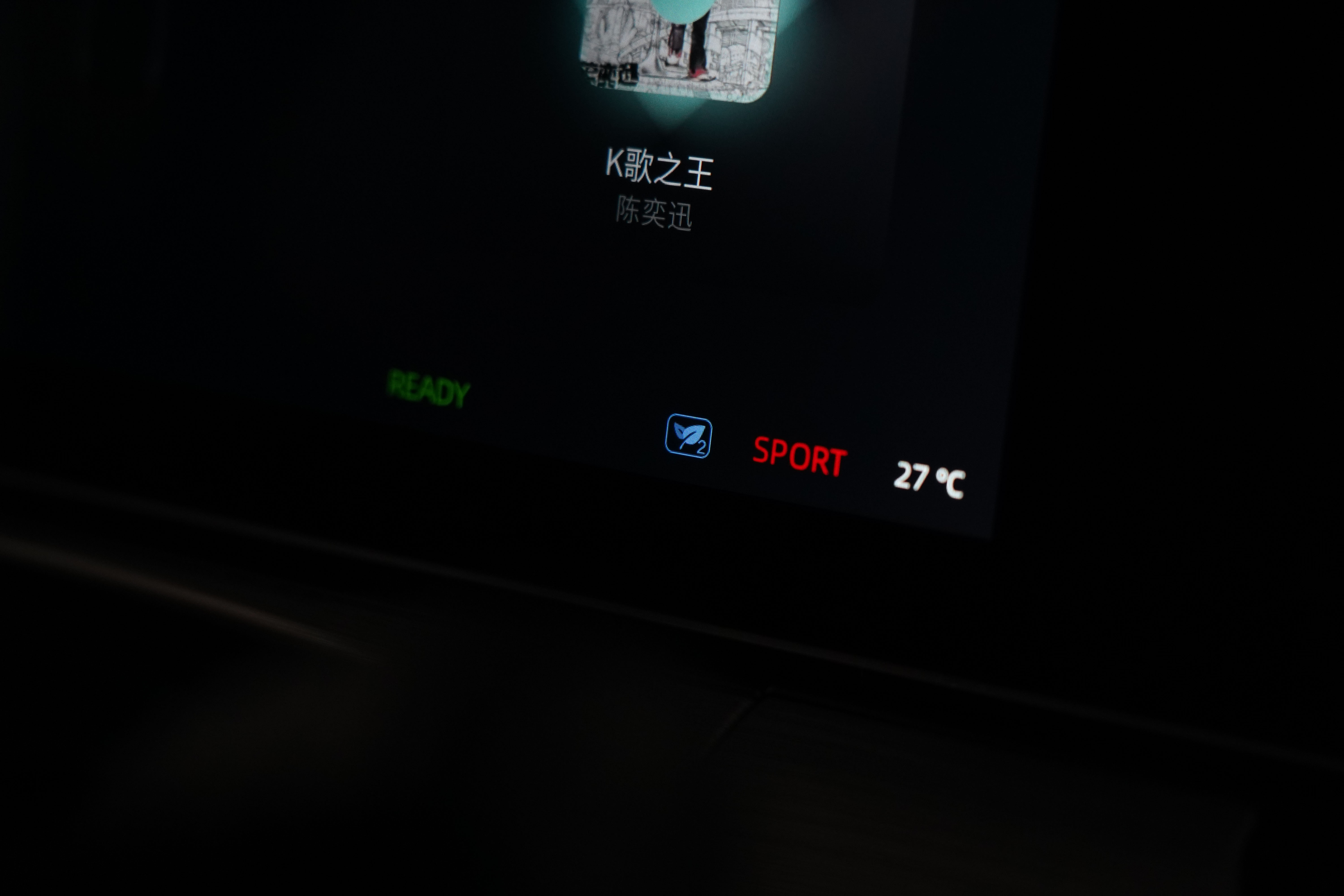
The kinetic energy recovery of the W6 can be adjusted in three gears, and the lowest gear is completely off, which is more friendly to transition users who are not used to it. The strongest gear has a deceleration effect that is approximately equivalent to the “casual” mode of Tesla’s kinetic energy recovery model.
There is also a setting that may also be considered for driving comfort, which is that there is a fixed delay in the intervention of kinetic energy recovery after releasing the accelerator pedal. I both like and dislike this setting.
I like it because with this delay, even if the vehicle is in the kinetic energy recovery gear and the accelerator pedal is released, the vehicle will still have a short sliding distance. In some scenarios, such as following a car when I do not know whether the car in the adjacent lane will change lanes or not, I want to maintain the speed but also want to leave some reaction time for braking. At this time, if I control the rhythm well and give the accelerator pedal intermittently and quickly, the kinetic energy recovery will not intervene between the two accelerator pedal movements, and the vehicle will not decelerate due to kinetic energy recovery, which is in line with my intentions as a driver.
The reason I dislike it is that sometimes in scenarios where deceleration can be achieved only by kinetic energy recovery, an additional brake pedal needs to be pressed due to this sliding distance. In low-speed scenarios, this setting gives the feeling of insufficient participation of kinetic energy recovery.
I did not do full brake testing on the W6, but the braking feel is of good quality, and the correlation between braking force and brake pedal feedback is well done. It is easier to use and feels more relaxed than the braking of the company’s P7 and EC6.
How about the suspension configuration and feelings?The W6’s suspension is relatively low-configured, with a McPherson front and torsion beam rear structure that is not commonly seen in today’s vehicles. As I mentioned when discussing power earlier, the W6 is not a car that provides a lot of driving excitement, so I didn’t try to aggressively drive this car to explore its cornering limits. Rather, I focused on what people who might consider buying this car would care about most- as an everyday car for grocery shopping or running errands, is it comfortable to drive?
This is actually a point I want to praise the W6 for. When I switched from the Model Y to the ID.4 CROZZ, I felt that the comfort of the suspension had improved, and with the W6, I felt that it improved even more.
In the ID.4 CROZZ, I could feel that the chassis was trying to balance the vehicle’s dynamic support on the basis of comfort. The springs’ initial stages were relatively stiff, and the car was a bit bumpy when driving over speed bumps at low speeds. But the W6 isn’t so concerned with that, and with this powertrain and suspension configuration that has little to do with driving dynamics, the entire vehicle’s chassis tuning is tilted toward comfort.
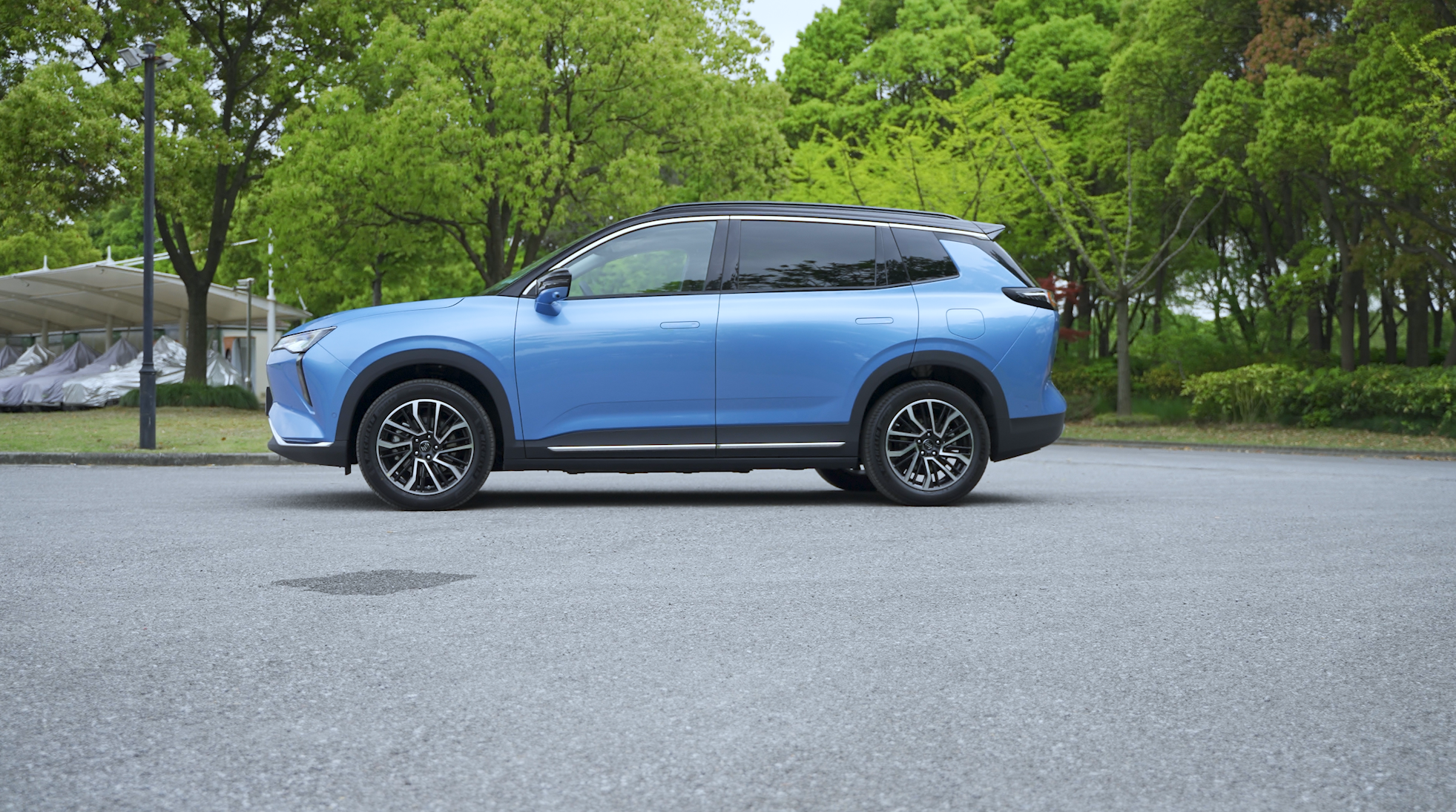
So whether driving at 80 km/h on a highway or just 10 km/h in a residential area, the vehicle’s buffering and filtering of small bumps and potholes is quite good. Passing over one or two small potholes won’t instantly wake you up. As someone who typically seeks driving excitement, my drive home in the W6 may have been the most relaxed and easiest drive I’ve had in the past few months.
Driver assistance, pros and cons
On the highway, I also experienced the W6’s driver assistance. To activate it, you need to press the cruise button twice on the steering wheel to go through the “settings” and “enable” process. Compared to a one-button activation, I personally don’t like this two-step logic. After activation, the vehicle displays a visual UI of the road environment on the dashboard, and the animation framerate is high.
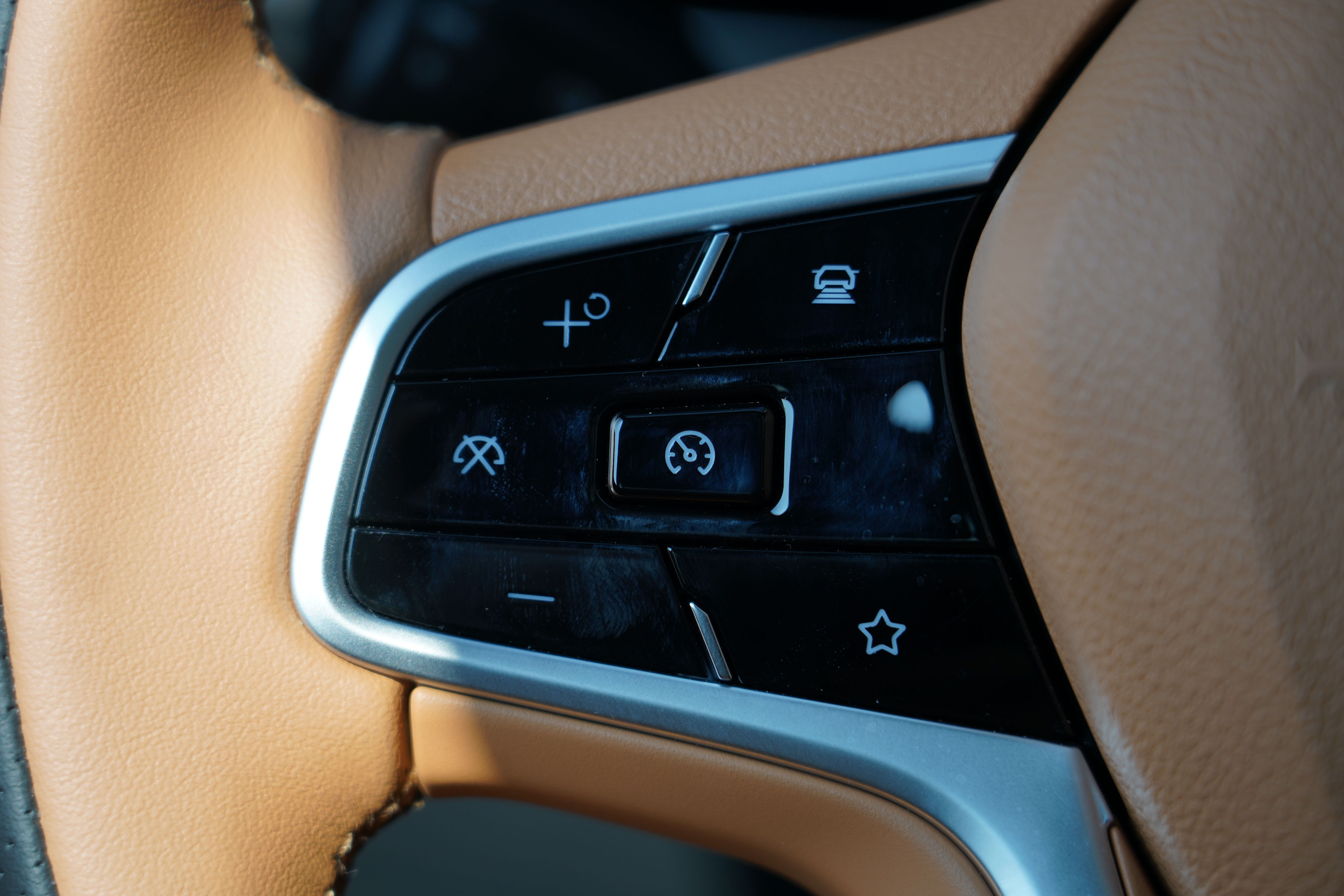
As for the actual ADAS experience, the vehicle’s adaptive cruise control is pretty good, with smooth acceleration and deceleration control. Additionally, when the car is stopped in traffic, it will follow the car in front of it when it starts moving again.This feature is now available in many cars equipped with congestion assistive driving capabilities. One thing I personally appreciate about the W6 is its good response to following the car in front of it after it starts, and another is that in a traffic jam scenario, if the car stops, a prompt appears on the instrument panel informing the driver that the vehicle will follow the car in front of it when it starts, and if the stop time is too long, there will also be a prompt to cancel the follow-start. Compared to models that rely on drivers to time and guess, the W6’s proactive notification method is clearly more intuitive.
Now onto my criticism. First of all, the W6’s overall lane-keeping ability is average, and it is not very stable when centered. When faced with a bend on a high-speed road, a smaller W6 can pass through, but a slightly larger one is very difficult. As a result, I always take control early before going through a bend on a high-speed road and then manually activate the driving assist on a straightaway.
Secondly, there is a logical problem. The W6 we have on hand does not have the feature of automatic lane change with turn signal. Typically, a vehicle with lane keeping but no turn signal will automatically release the lane keeping status after the turn signal is triggered, making it easier for the driver to change lanes.
However, the W6’s lane-keeping status remains unchanged when the turn signal is on, so every time this happens, you need to level up with the vehicle’s lane keeping before changing lanes. In my opinion, this is a logical issue that needs urgent optimization.
After driving the W6 these past few days, due to its insufficient lane-keeping ability, the driving assist technology’s utilization rate is still a bit low on the road. When the speed increases, it is difficult for the vehicle to maintain a stable lane position with many bends or cars on both sides. This performance has left me somewhat disappointed, and overall, there is still a significant gap between the W6 and the current market’s first-tier players.
Reflections after the Test Drive
Above is my experience driving the W6. In a limited amount of time, I tried to experience as many of the vehicle’s strengths and weaknesses as I, as a driver, could perceive. In theory, this article should end after I’ve written about these things.
But before I started writing this article, I had a few other questions about the W6 that I thought I should share.
The first question I asked myself was: Do you think Wey has made progress after driving the W6?
In terms of the product, the answer is yes. The latest W6 from Wey has a longer range and higher configuration compared to the EX5 that was delivered three years ago. The car-machine interaction has improved significantly, the voice control is much more user-friendly, and the AVP parking is unprecedented.
Considering the size of this car and its 520 km NEDC range, the car we received sells for less than 210,000 yuan, which is definitely not expensive.
Following that, I asked myself another question: Do you think this car will sell well?
When faced with this question, I fell into contemplation. Memories of Wey and Chinese smart electric cars from the past few years began to play in my mind.
Three years ago and now.On September 28, 2018, WEY EX5 officially began delivery. For WEY and the Chinese intelligent electric vehicle industry at that time, it was a memorable day.
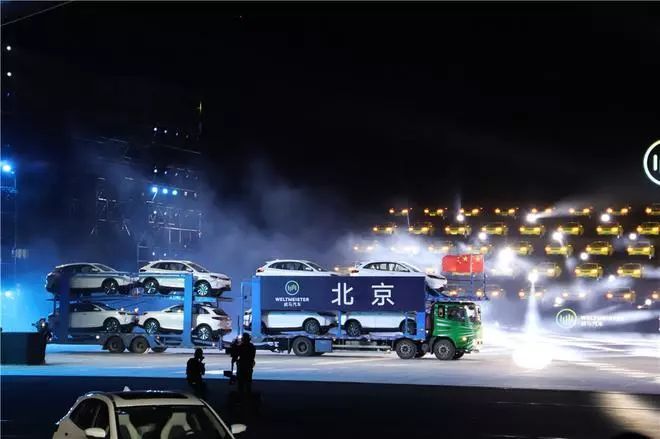
Readers who have only recently started to pay attention to electric cars may not feel it, but 3 years ago, a well-designed compact pure electric SUV starting at only RMB 112,300 was an exciting thing. Simply put, EX5 could be described as the Xiaomi of the electric vehicle circle at that time.
And that car actually delivered. At a time when the new automobile industry left people with the impression of using PPT to raise funds, EX5 and WEY were very pragmatic. The early market feedback on EX5 was also relatively positive, and its sales were relatively good at that time.
However, today WEY no longer has the same aura as before. In the 2021 wave of new energy, the W6 has become one of the more niche models.
During these three years, in the battle for market positioning among new energy brands in consumers’ minds, WEY did not achieve a very prominent position. The “cost-effectiveness” label brought about by EX5 has gradually been forgotten by consumers.
On the W6, WEY hopes to emphasize its intelligence, so it has focused on parking and in-car systems. The effects of these two aspects have indeed been reflected in the product at a good level.
But as they say, there is always someone brighter than you. After the efforts of the G3 and P7, the most eye-catching label of intelligence on the market is now affixed to Xpeng. Without achieving an overall superior position in terms of capabilities, it is difficult for WEY to attract close consumer attention in this regard.
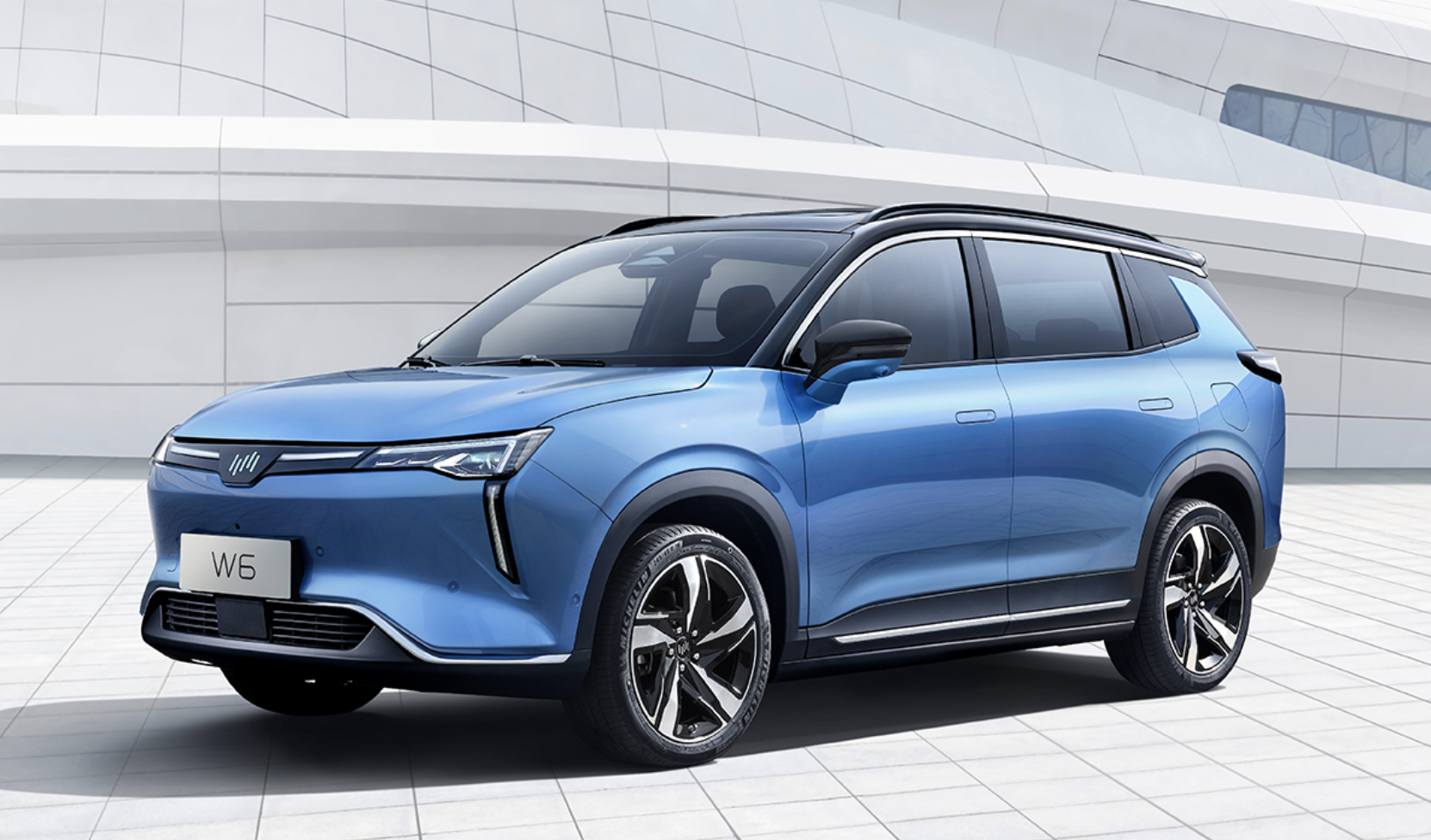
In an era when new energy vehicles are emerging collectively, the first thing consumers remember is the first one. If they don’t associate parking capability and intelligence with WEY, when they need to buy such a model, W6 may not be the first thing that comes to mind. This is a big challenge for WEY.
Conclusion
The W6 that entered the market in 2021 is average in space and driving experience, without many surprises but also without too many flaws. In terms of comfort and endurance at this price level, it is considered to be among the most cost-effective.It is such a car that, after several days of test driving, I have no clear image of its audience in my mind. Just like the appearance of the W6, it looks fine and has some features, but lacks a memorable impression among its features.
If you are someone who has no concept of electric vehicles and no knowledge of electric vehicle brands, just buying a W6 for home use is not a problem. However, such consumers seem to be decreasing these days.
When I think back to the moment when the W6 found its own parking space and parked itself in the parking lot, I was actually quite excited. After all, for WM Motor, this time the AVP (Autonomous Valet Parking) was really made and put into mass production first, which is somewhat similar to the feeling of the EX5, which had a delivery start of November 23rd, 2018, and was delivered comfortably. However, compared to the excitement stirred up by Xiaomi’s price at a similar level, the AVP’s attraction to consumers is obviously not as exciting.
Looking from a long-term perspective, I am reminded of the first question I raised: Do you think WM Motor has made progress after driving the W6?
Right now, I think that this progress is relative. In an industry that is rapidly developing and iterating, being better than oneself in the past is not enough. If you want to become a benchmark, you must progress faster than this rapidly developing industry.
However, under a predetermined situation, it may be the most important thing for WM Motor to promote and improve the intelligence of the W6, in order to attract more potential users and share its achievements of intelligence with more people, amidst the halo of peers.
This article is a translation by ChatGPT of a Chinese report from 42HOW. If you have any questions about it, please email bd@42how.com.
